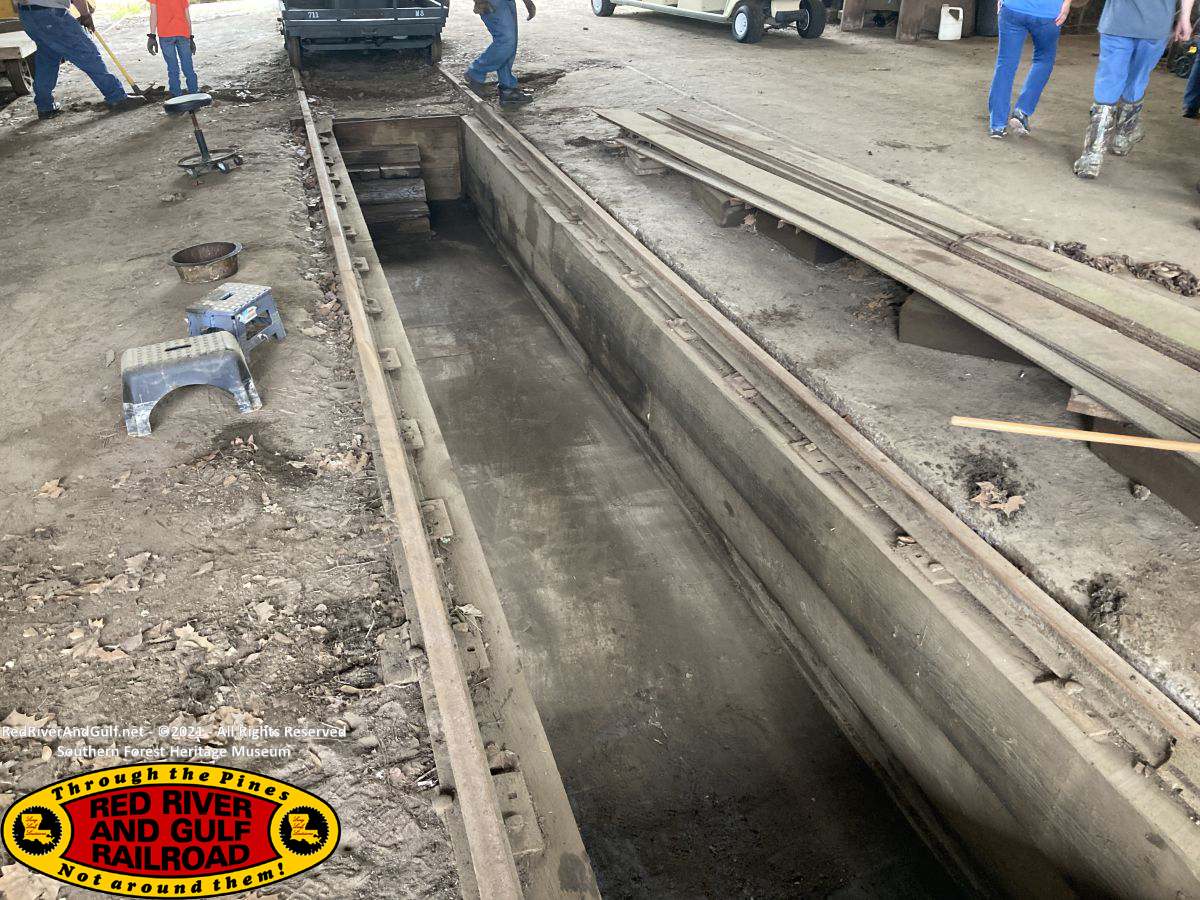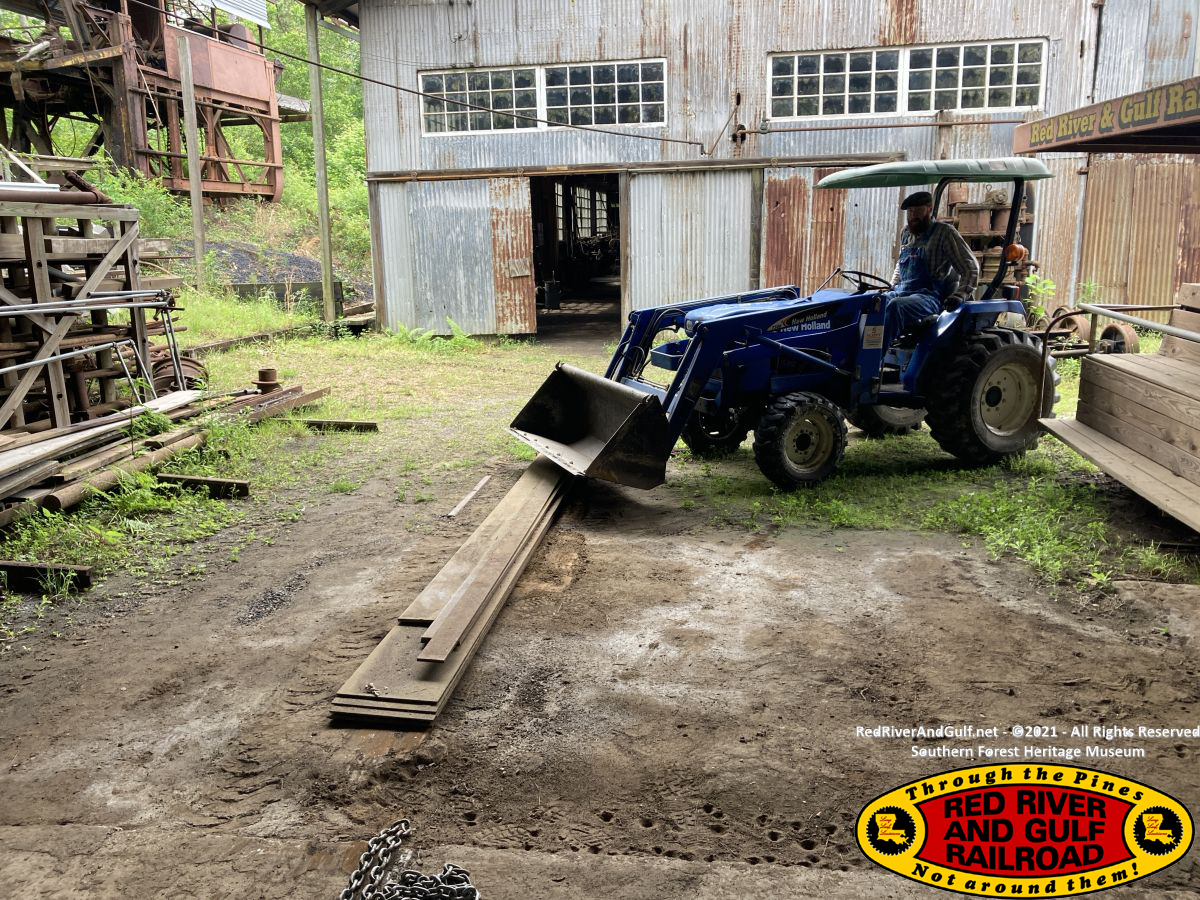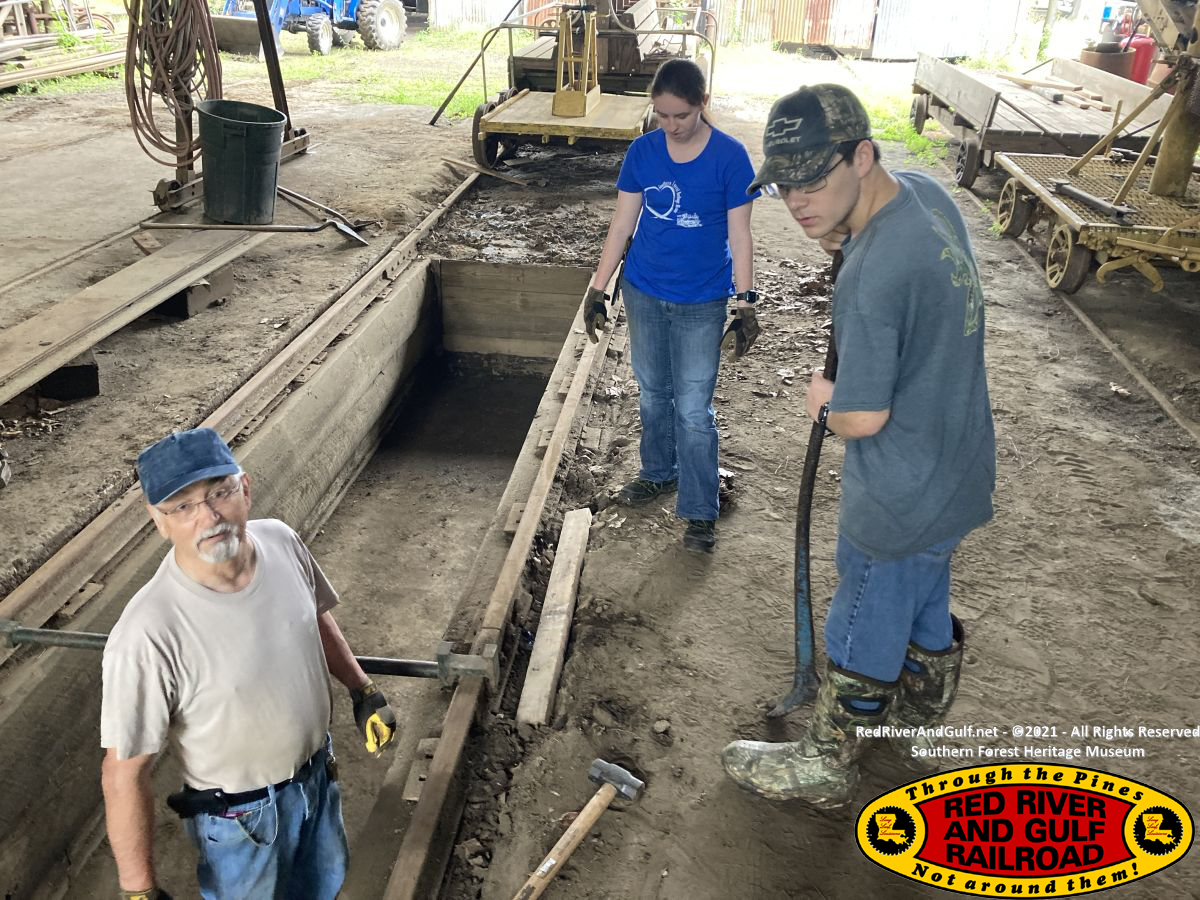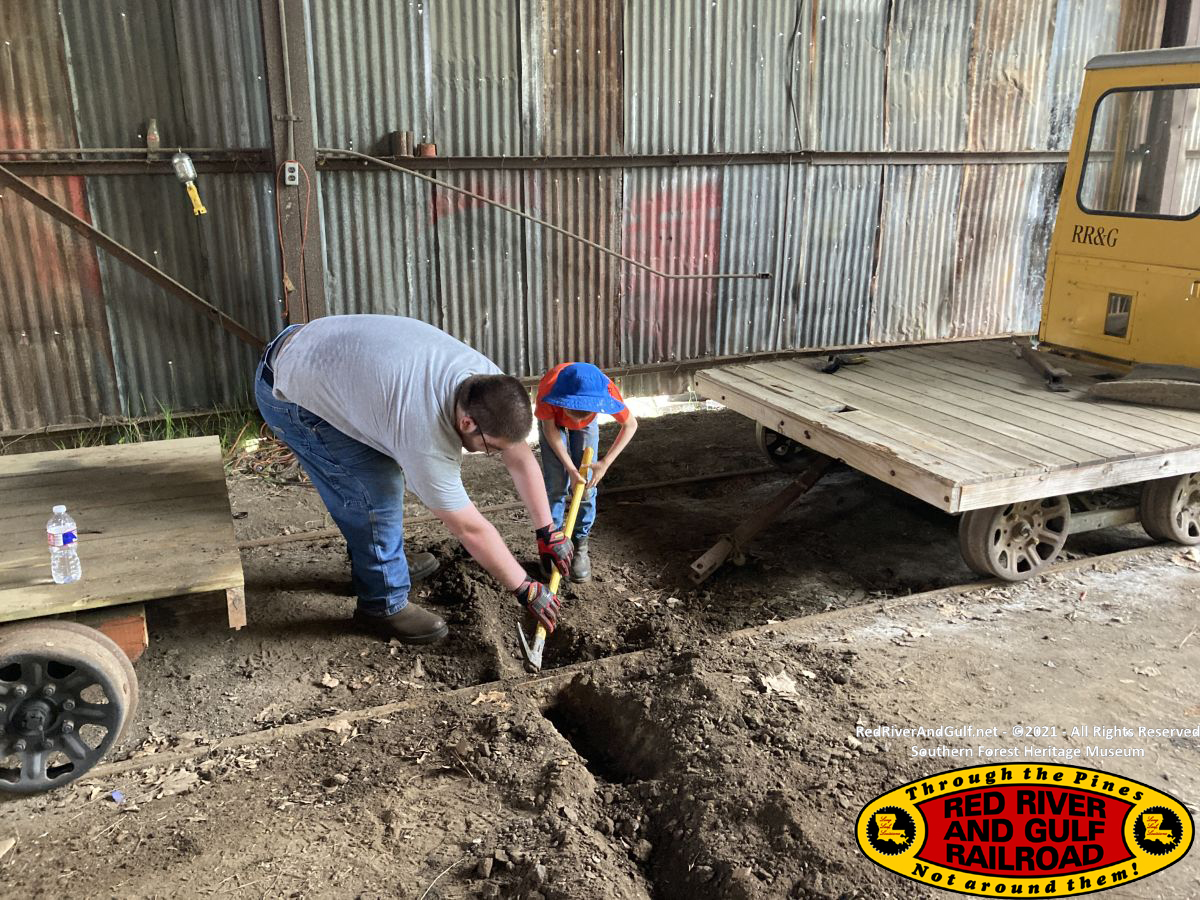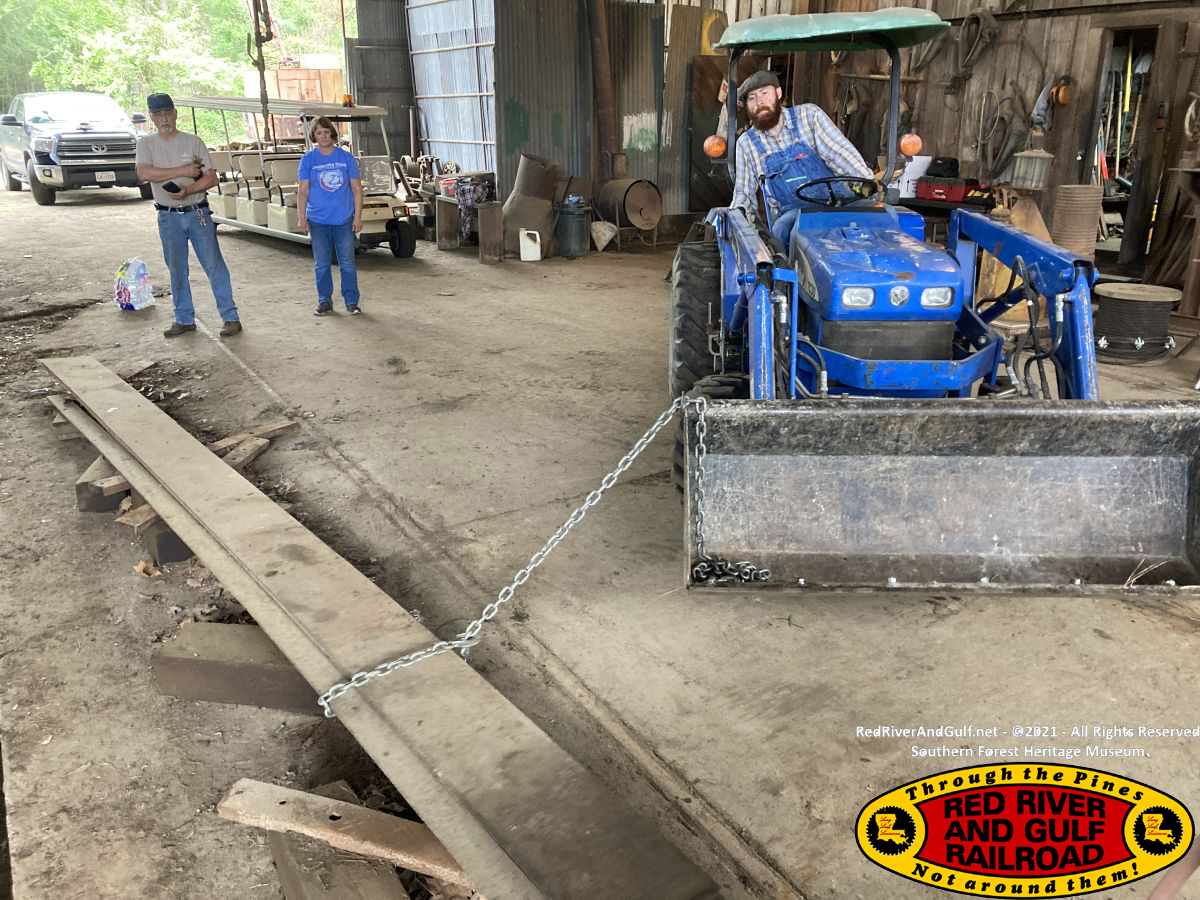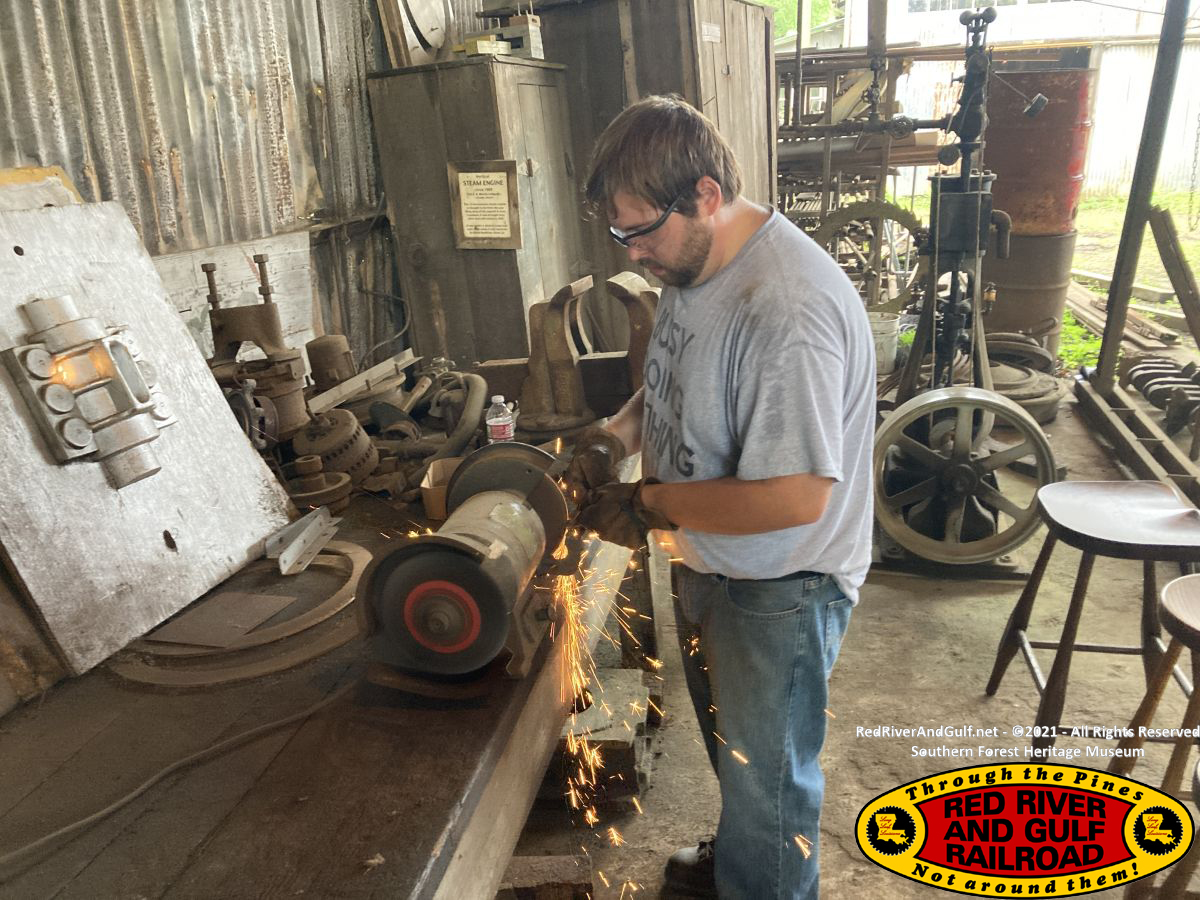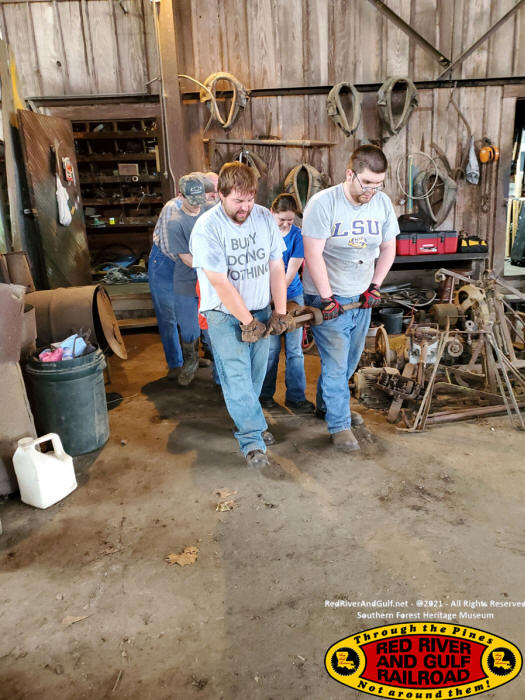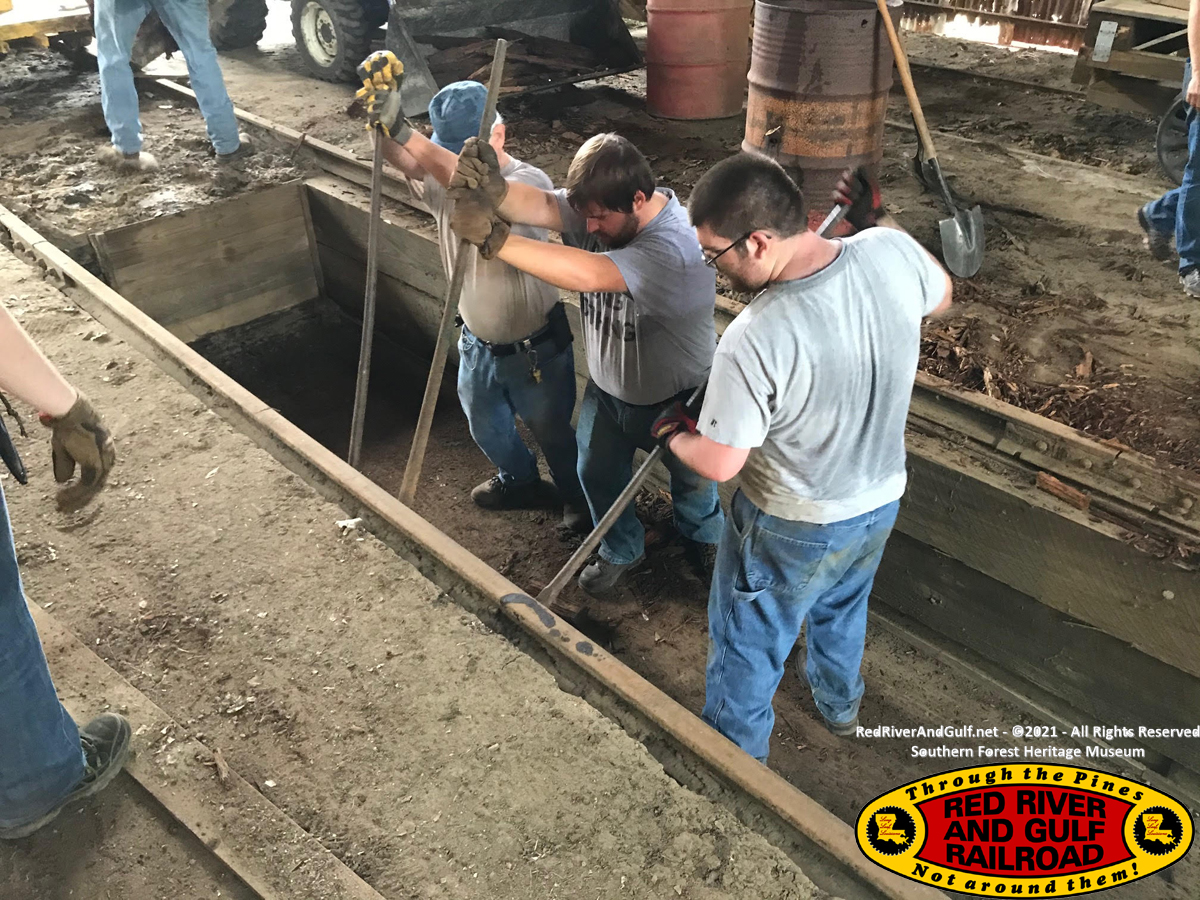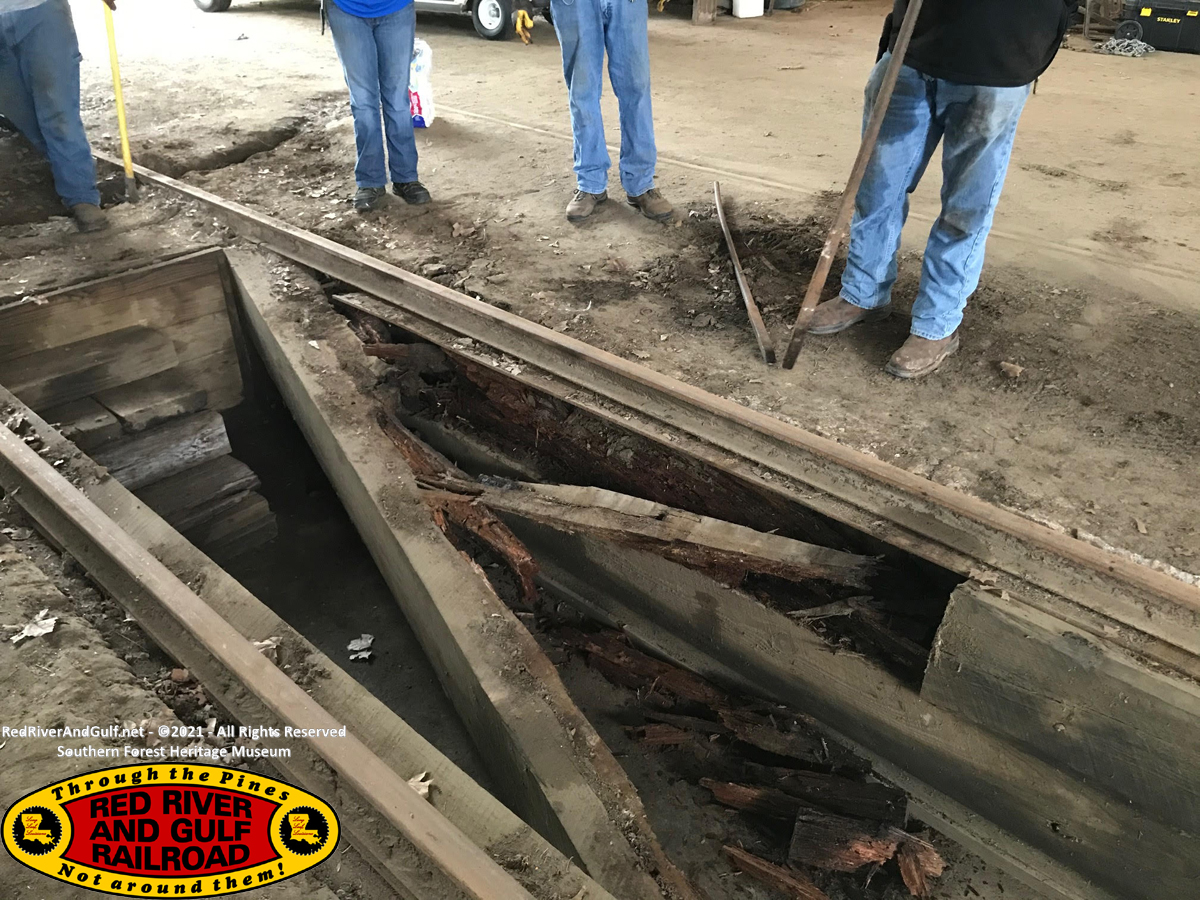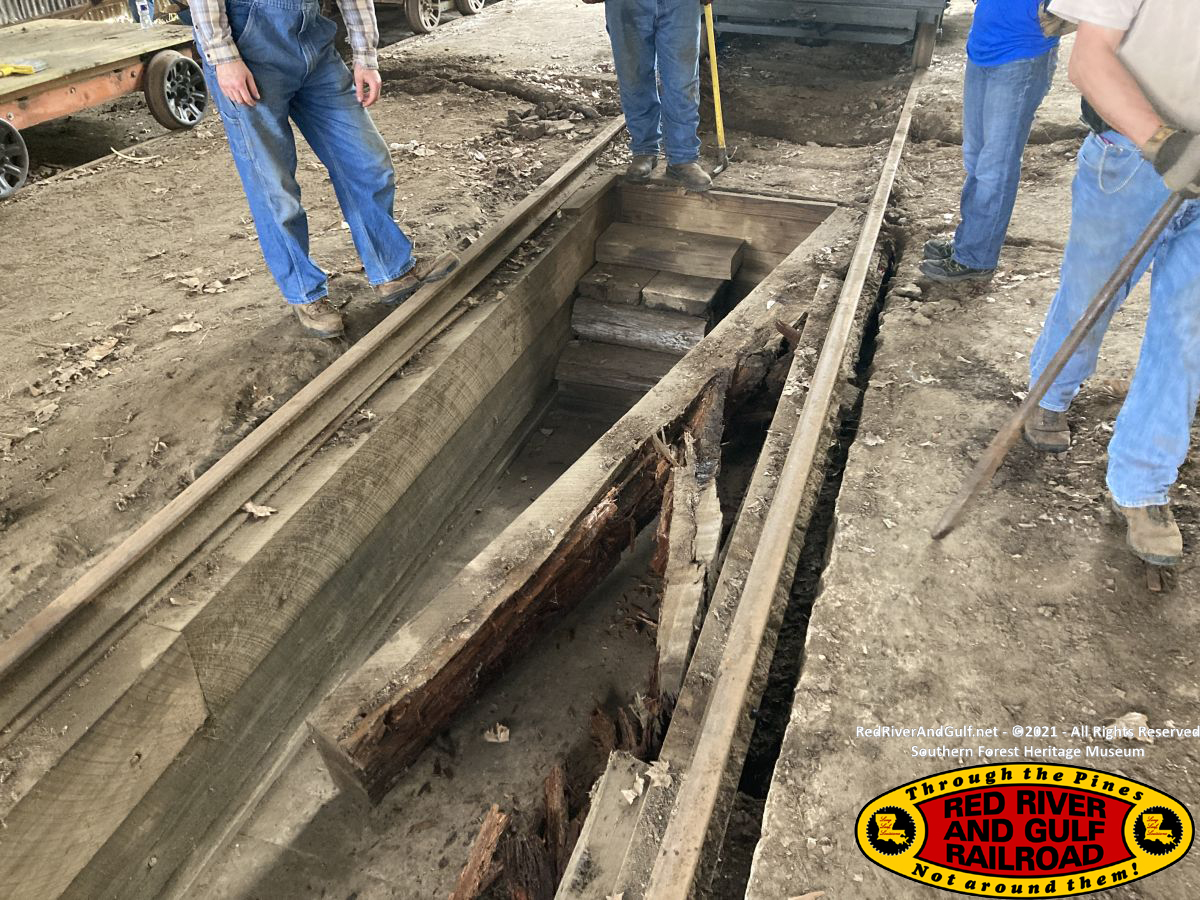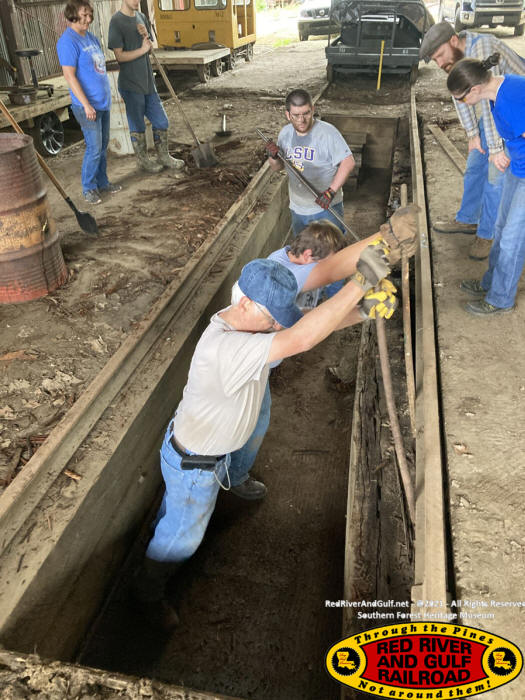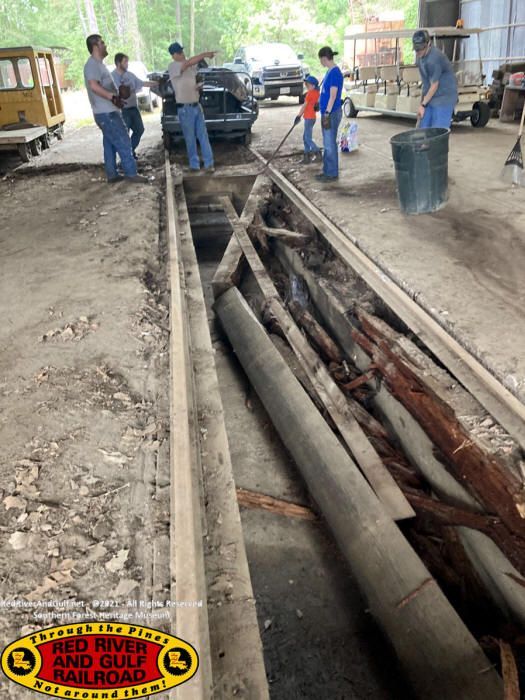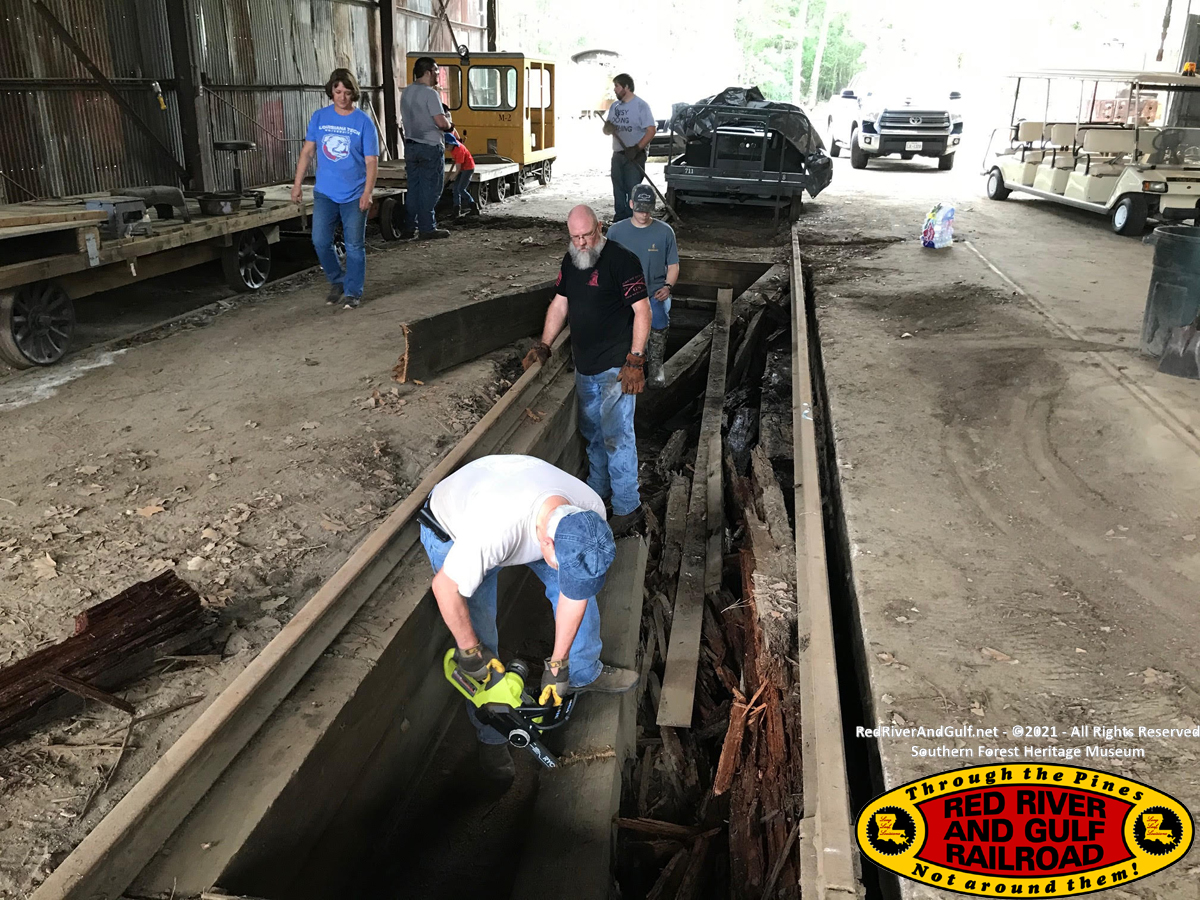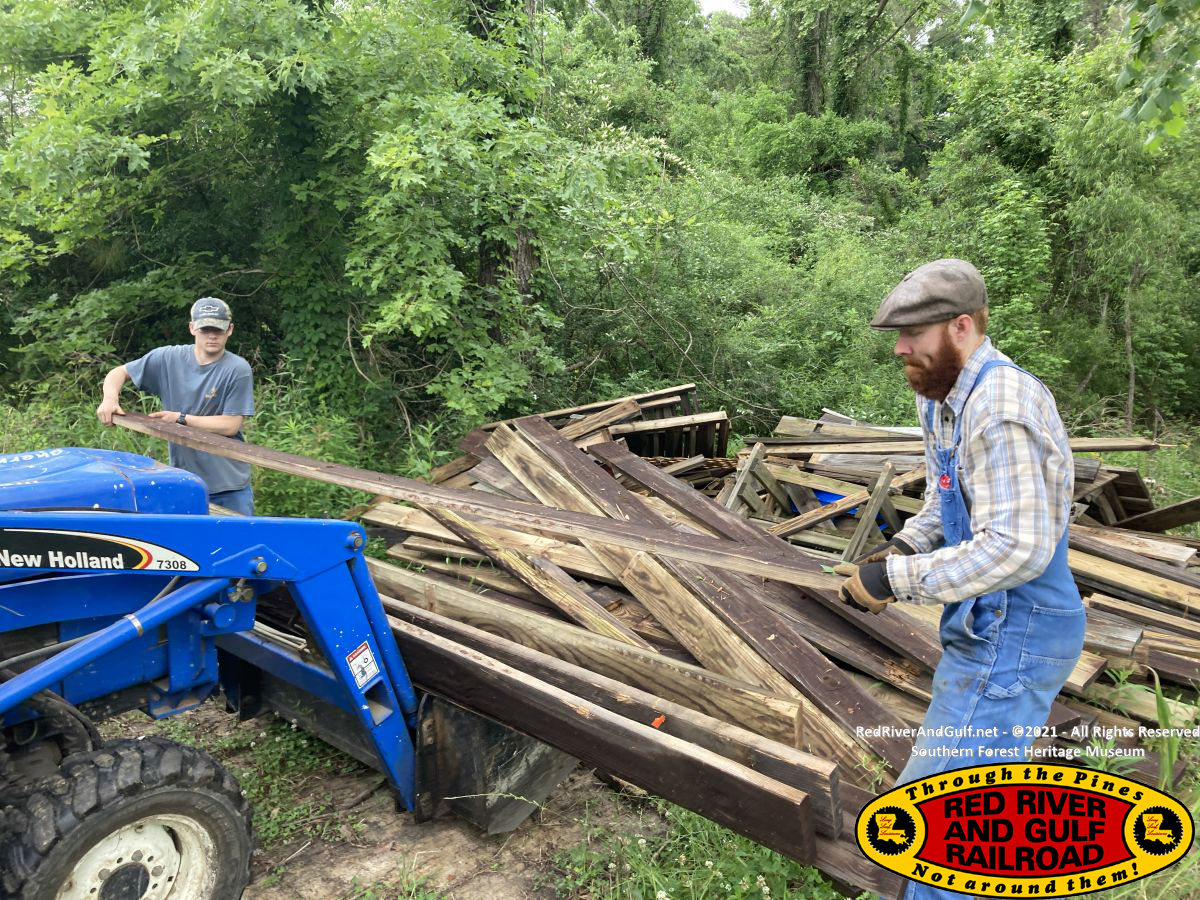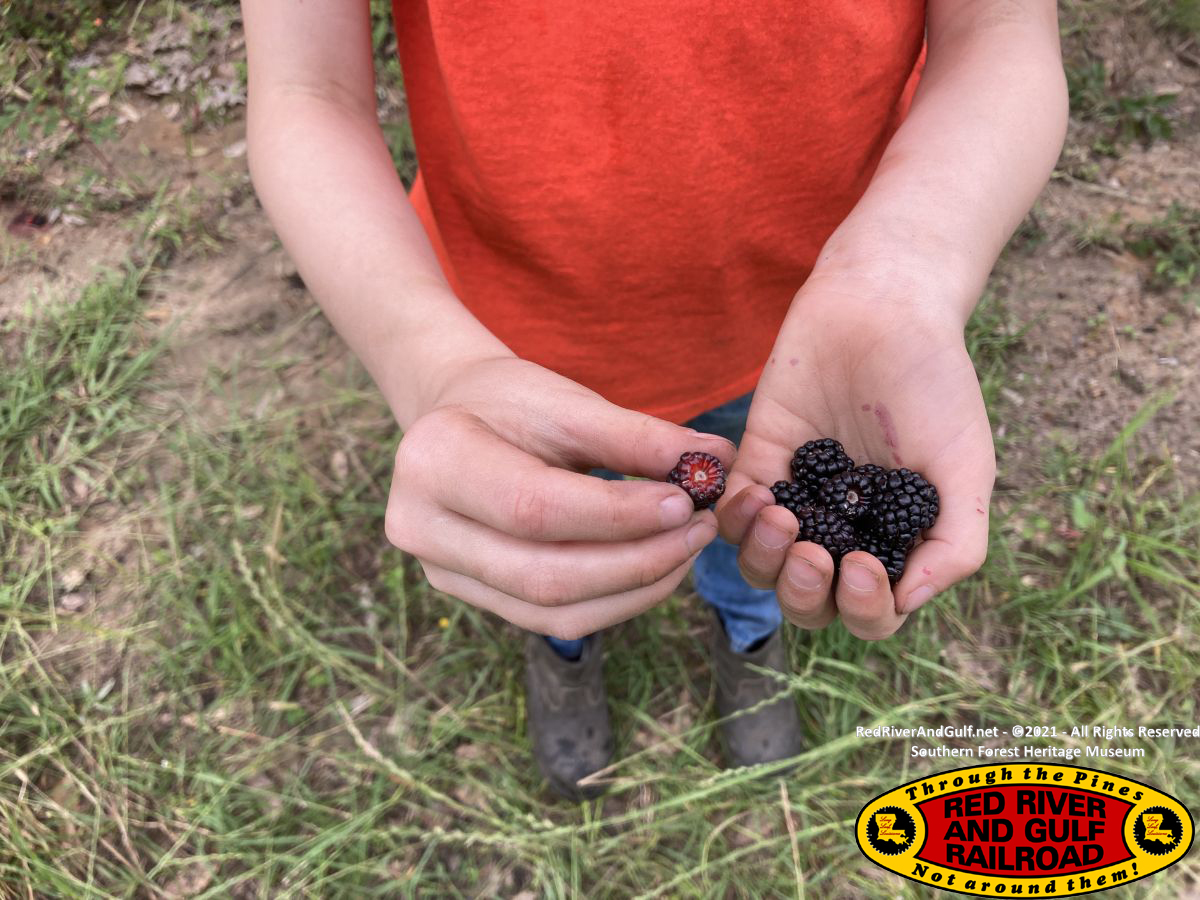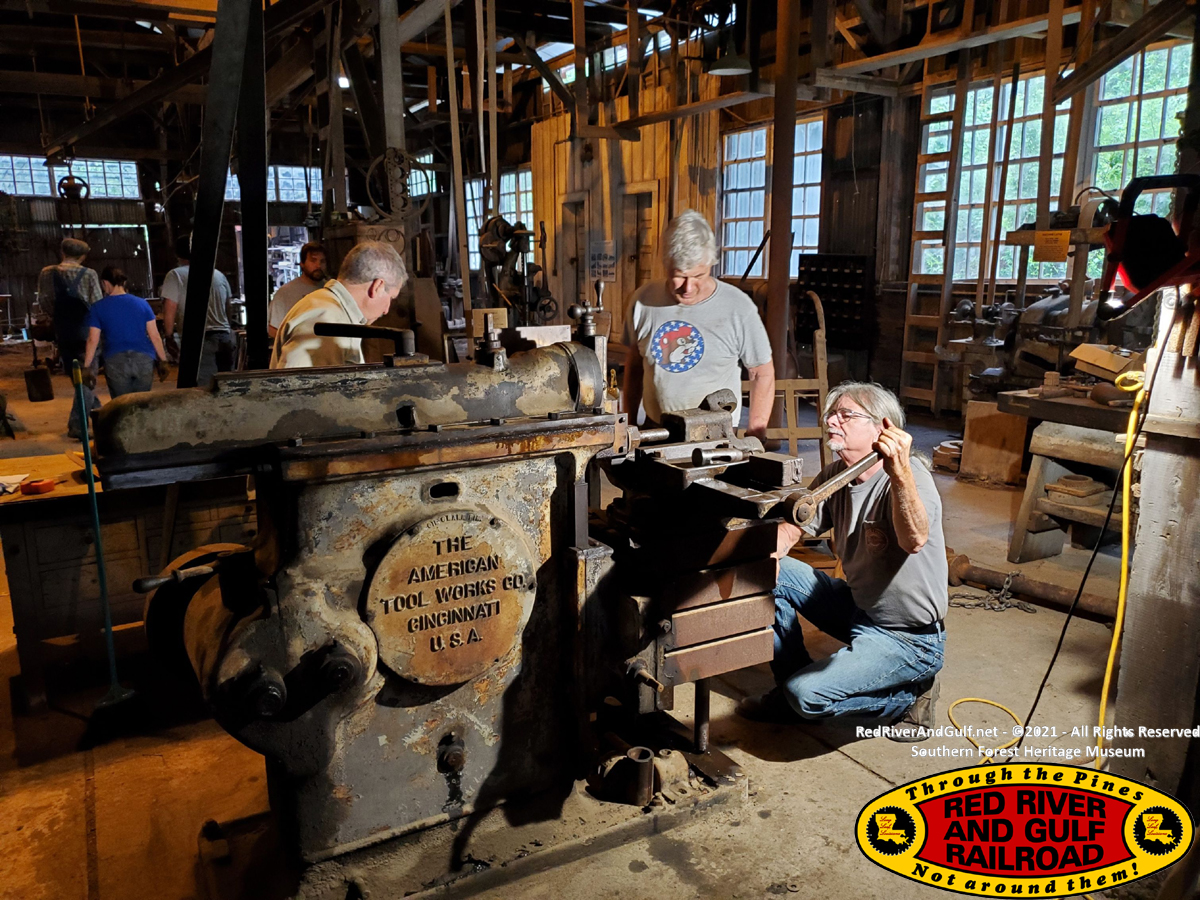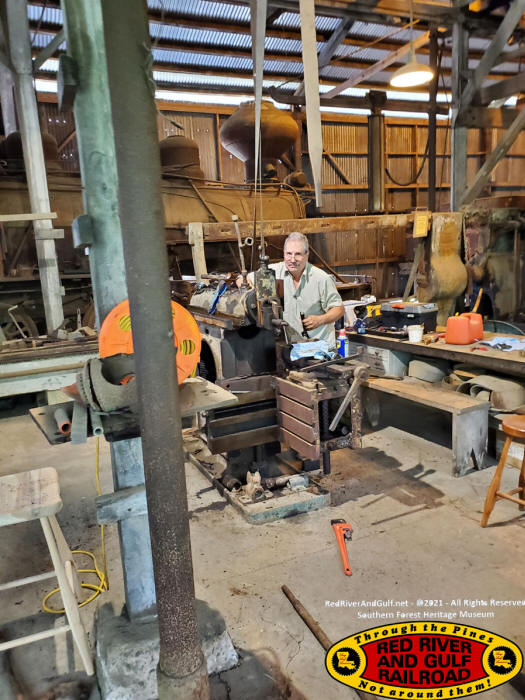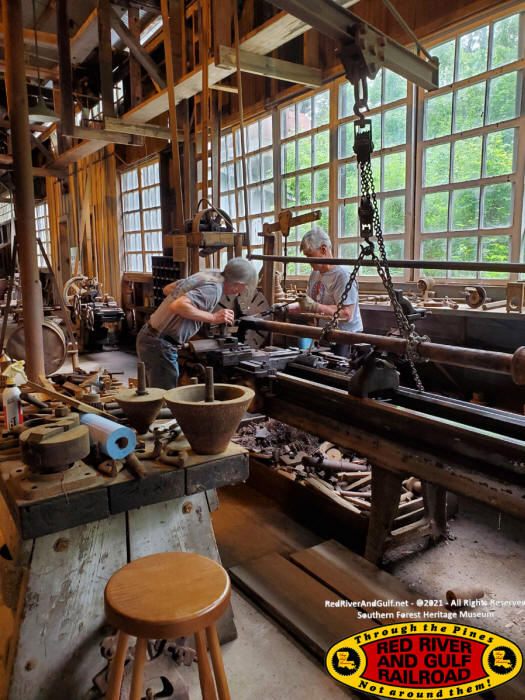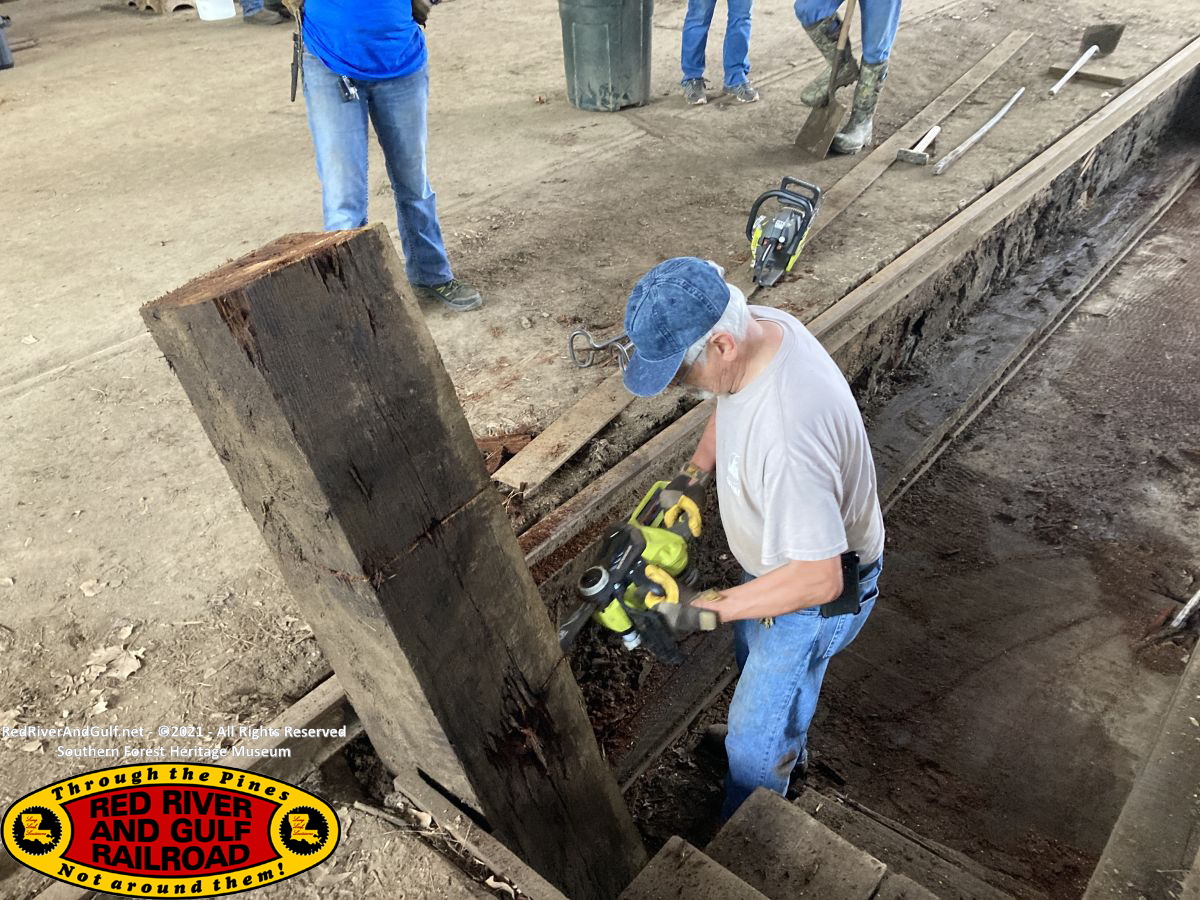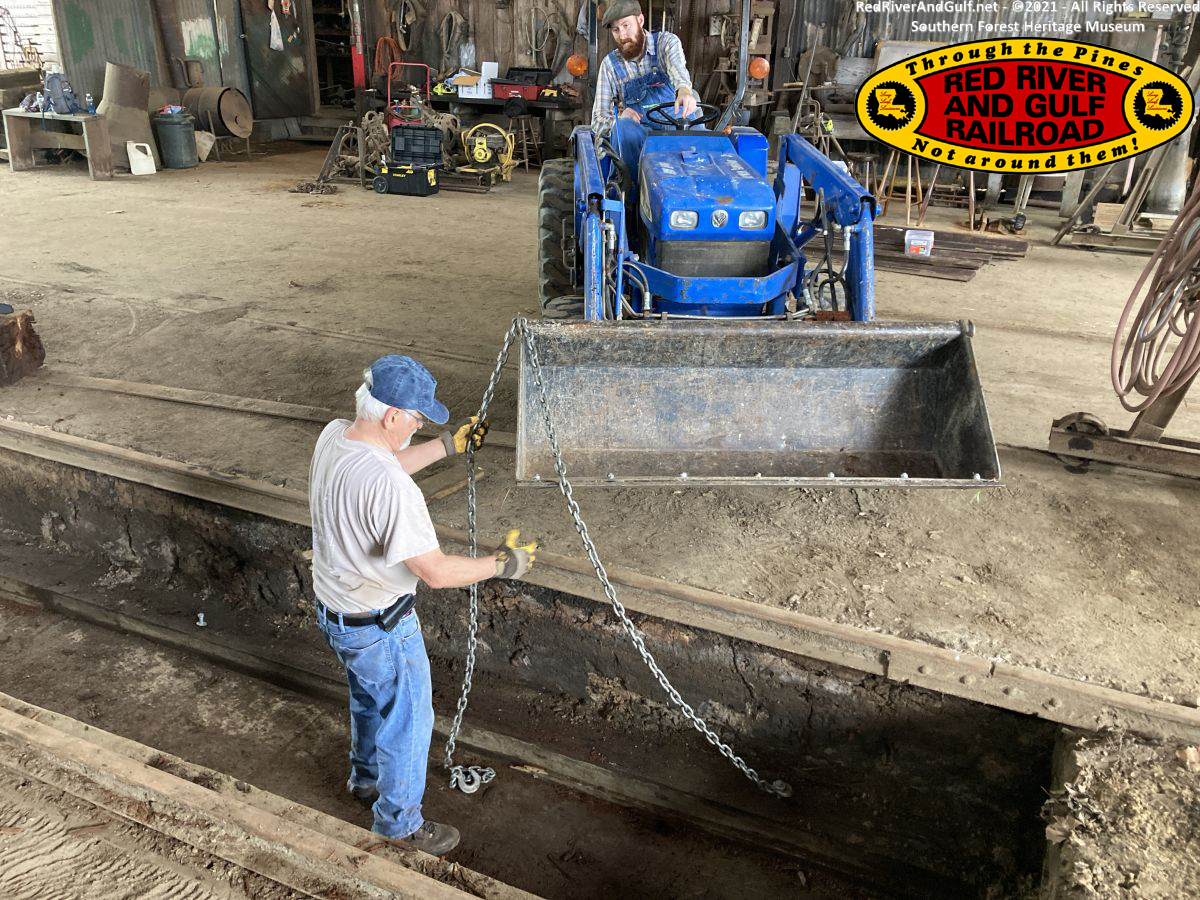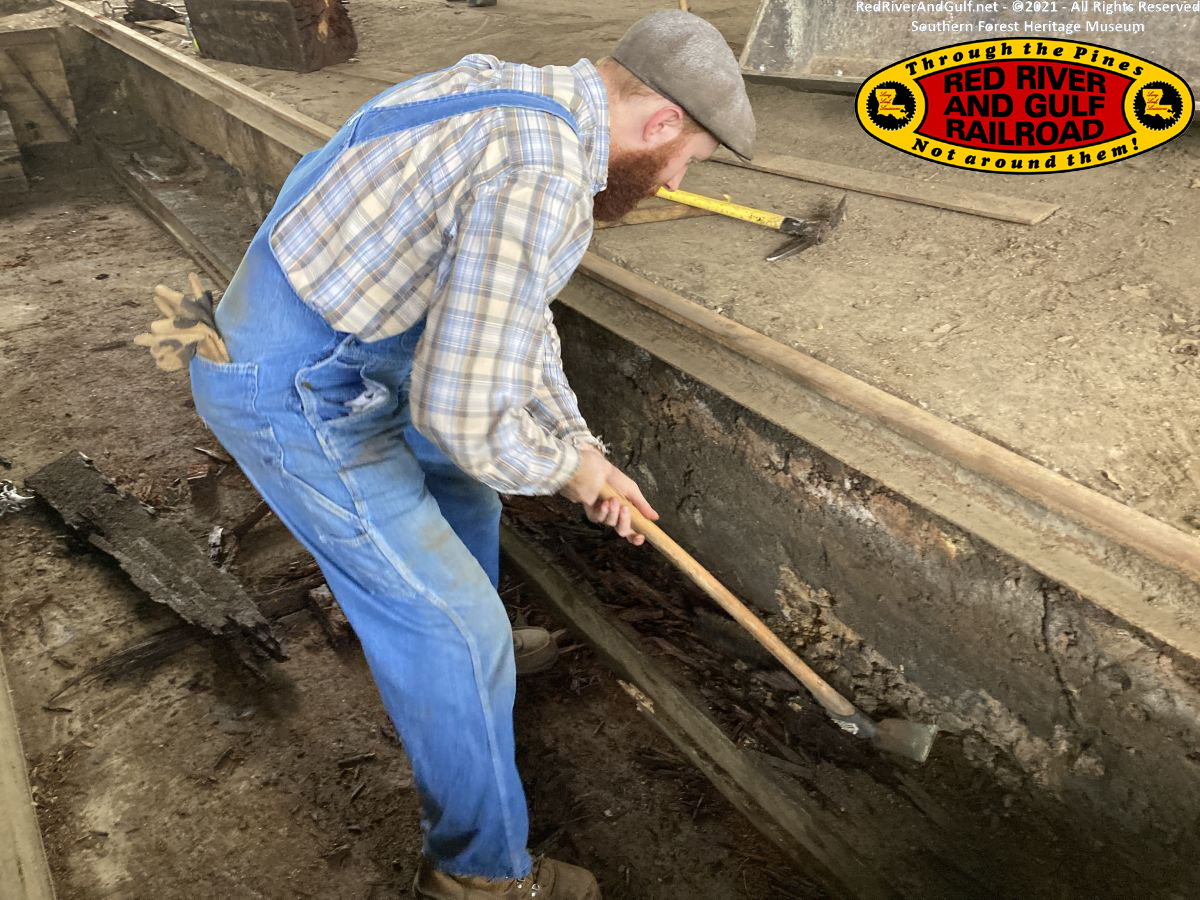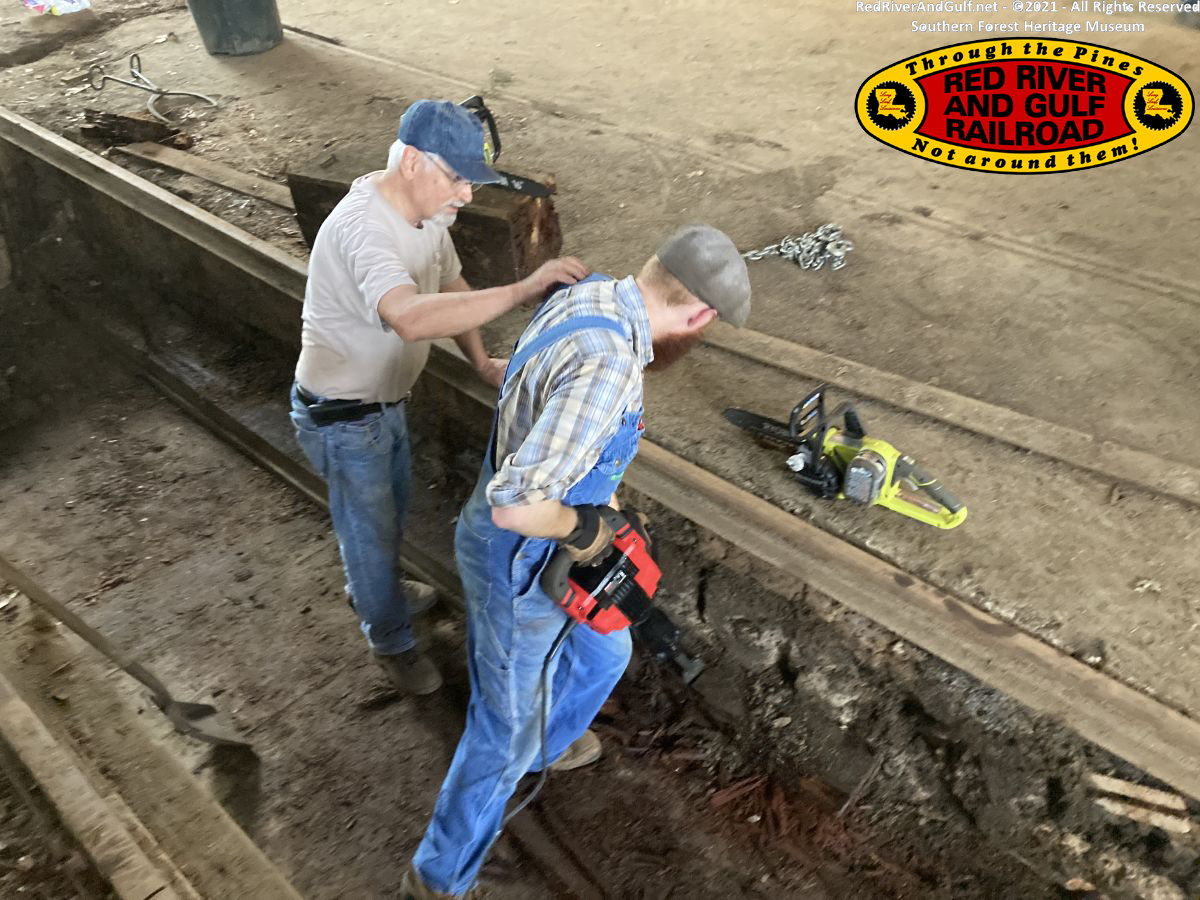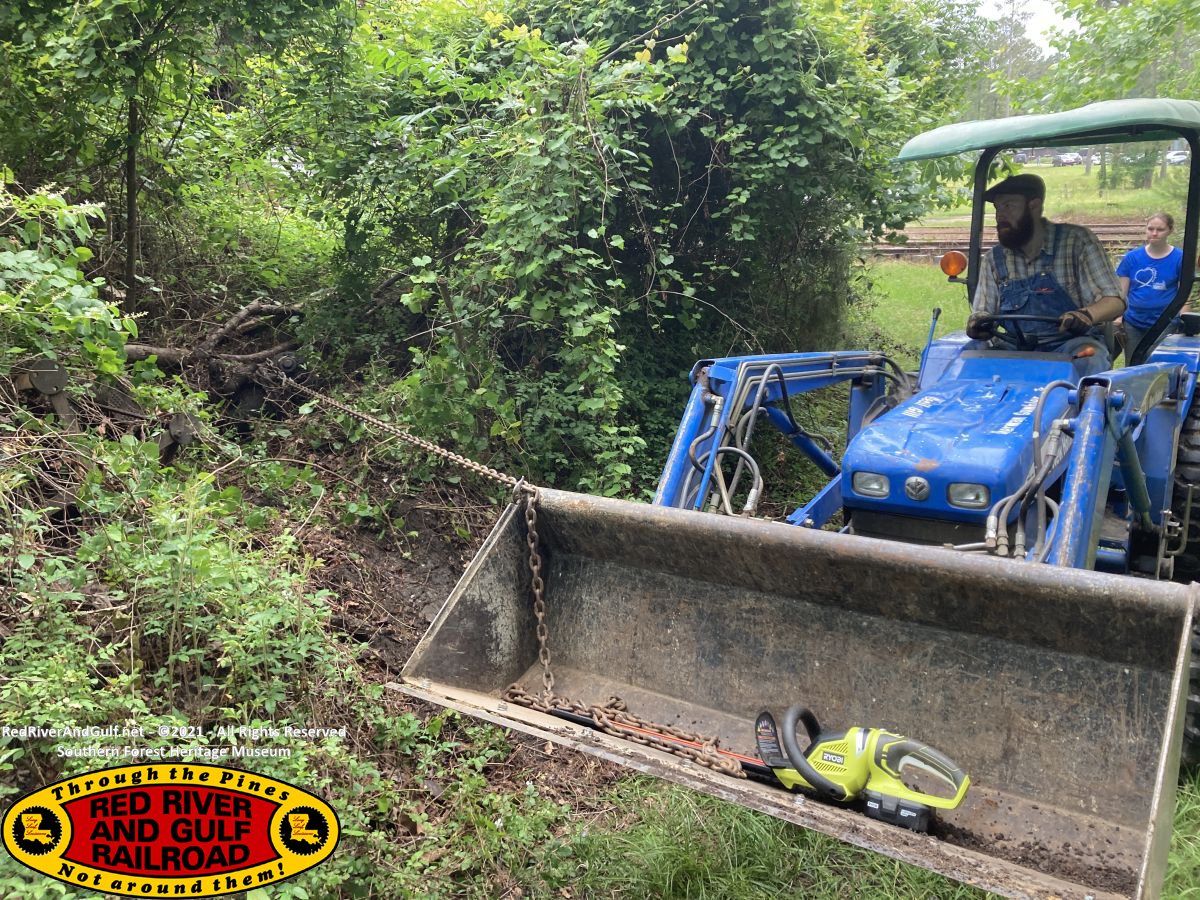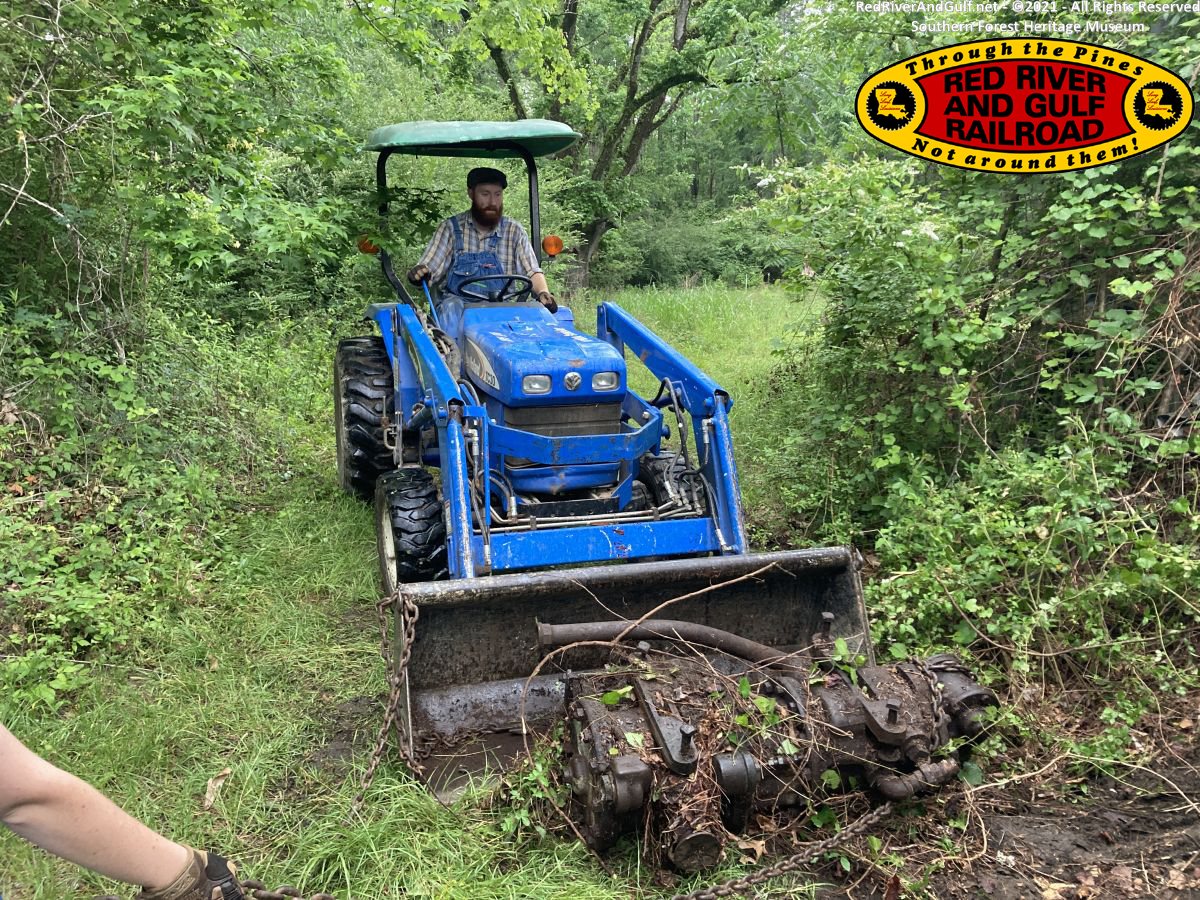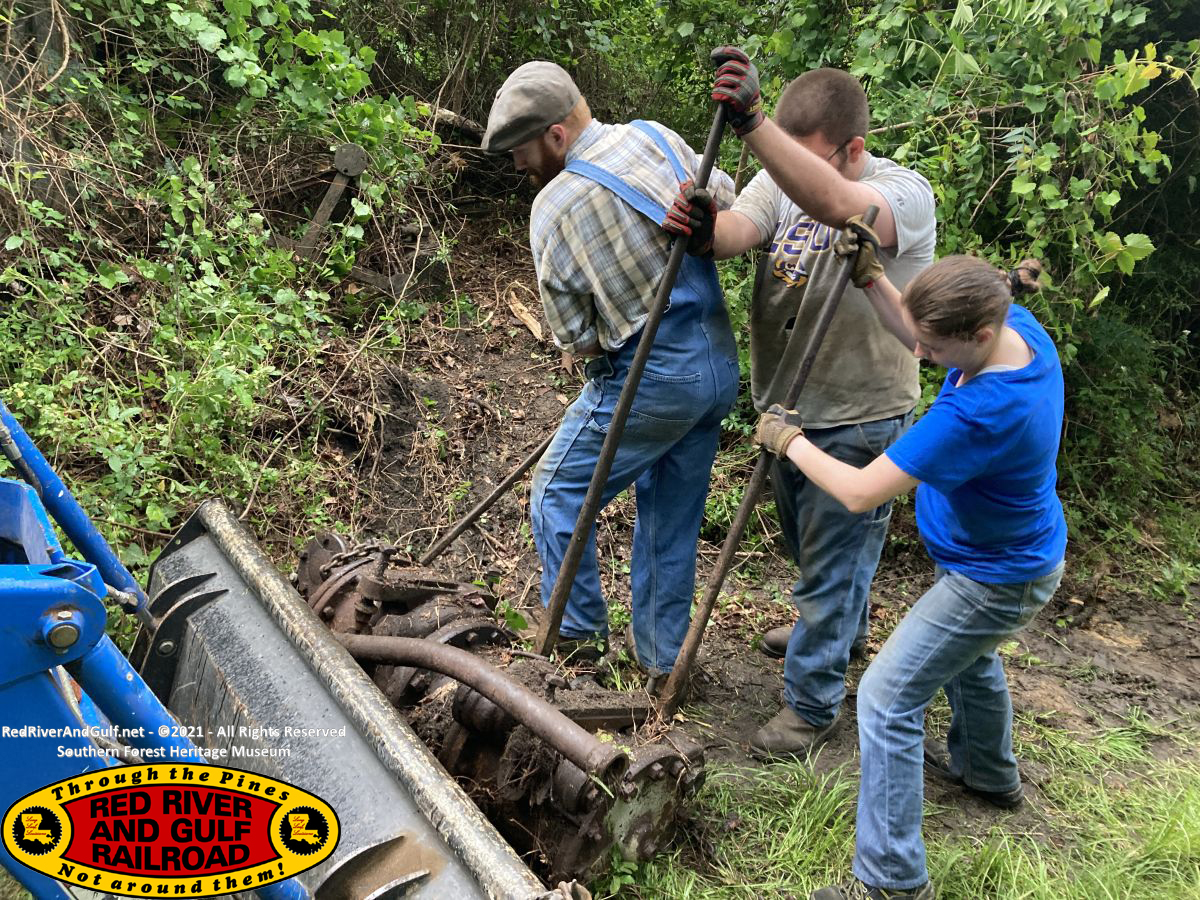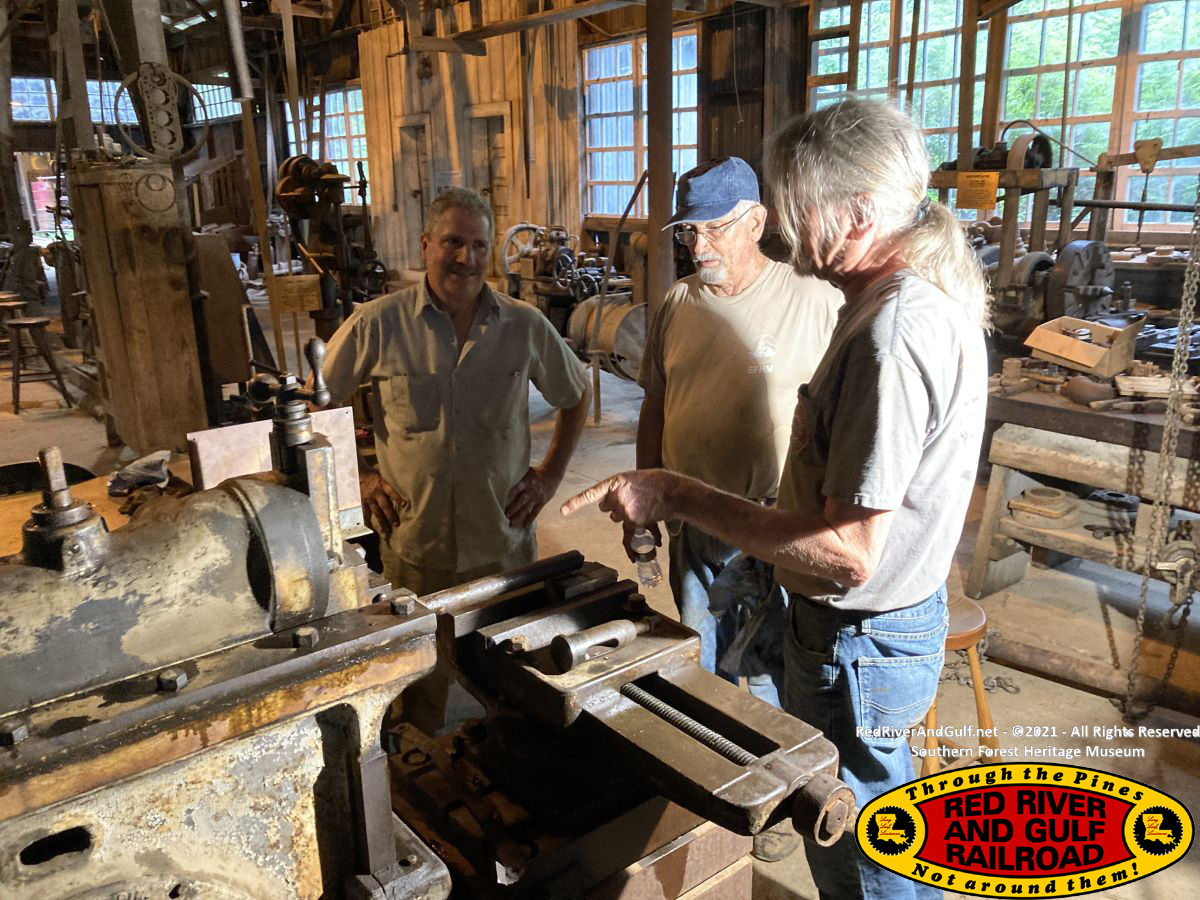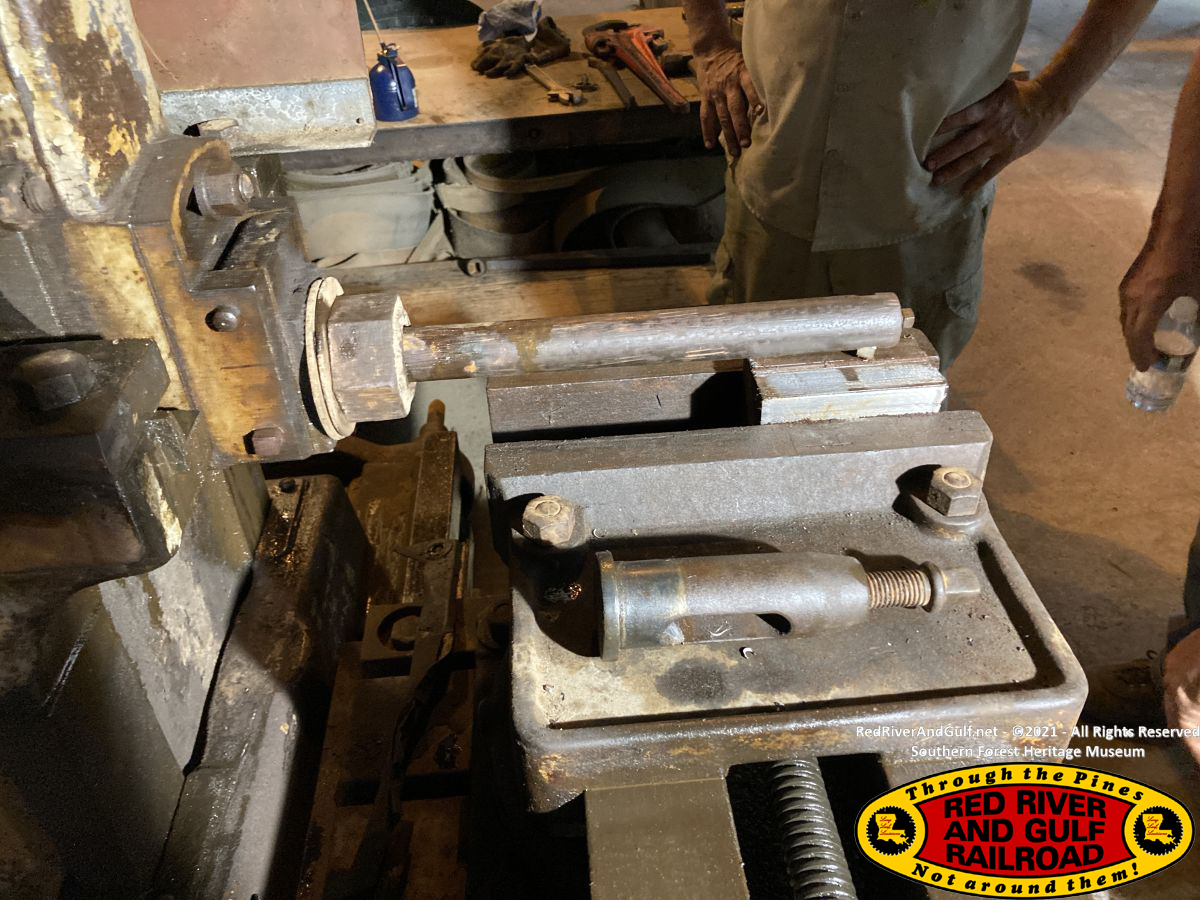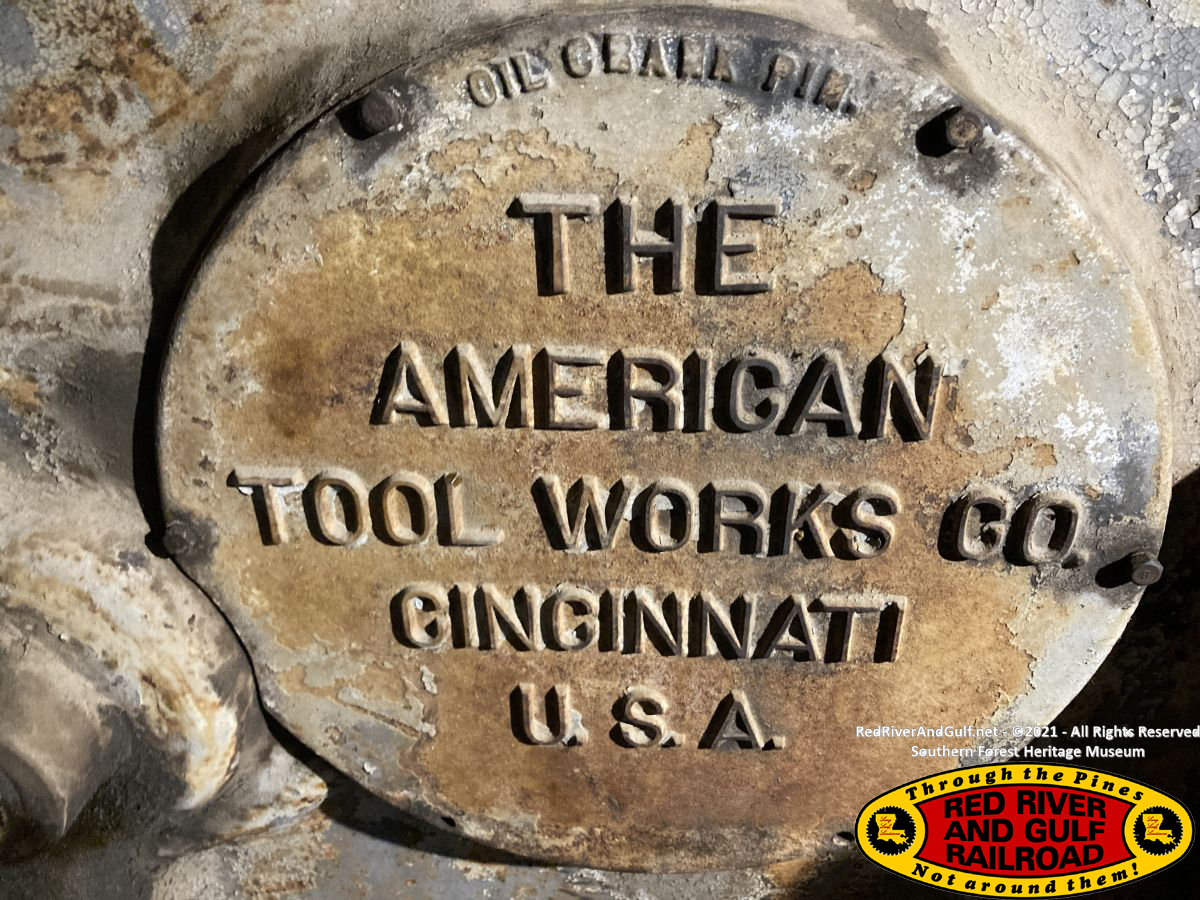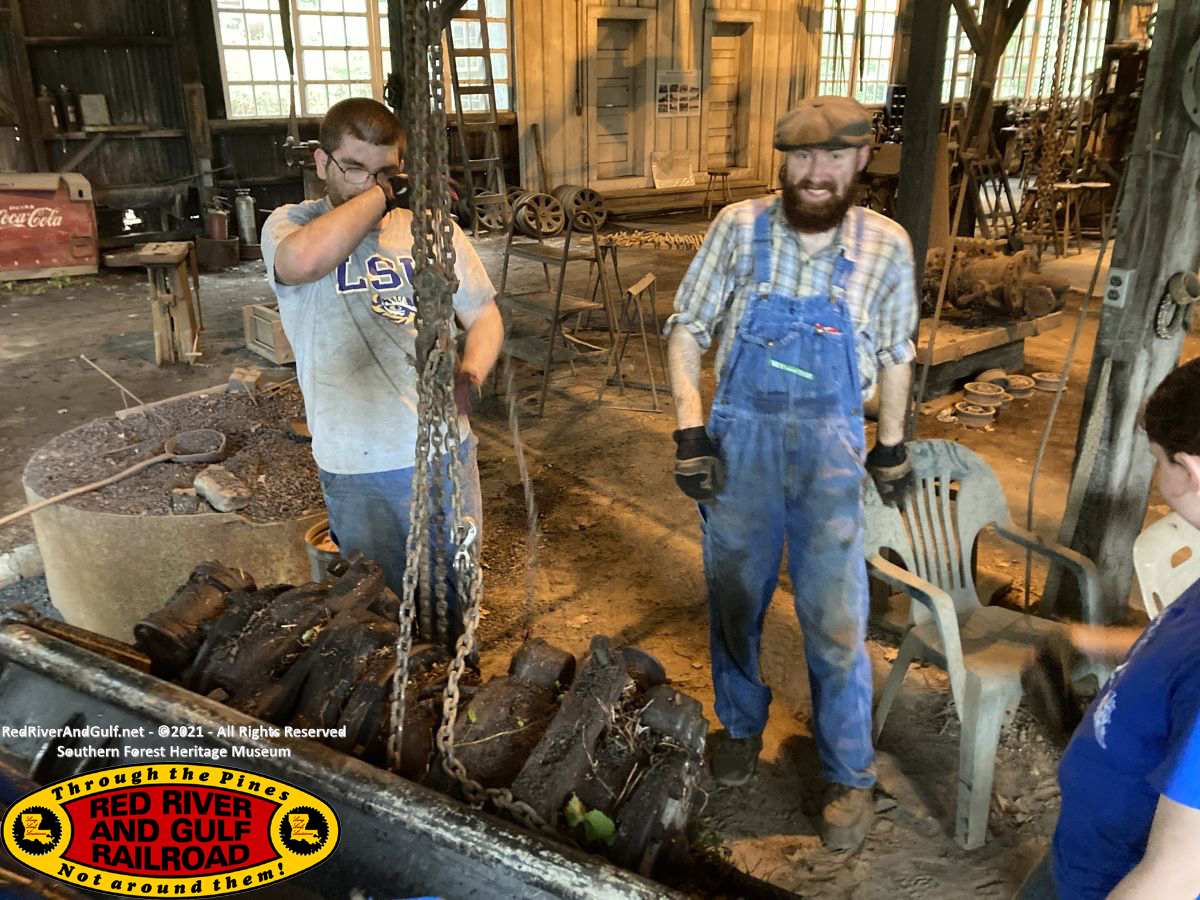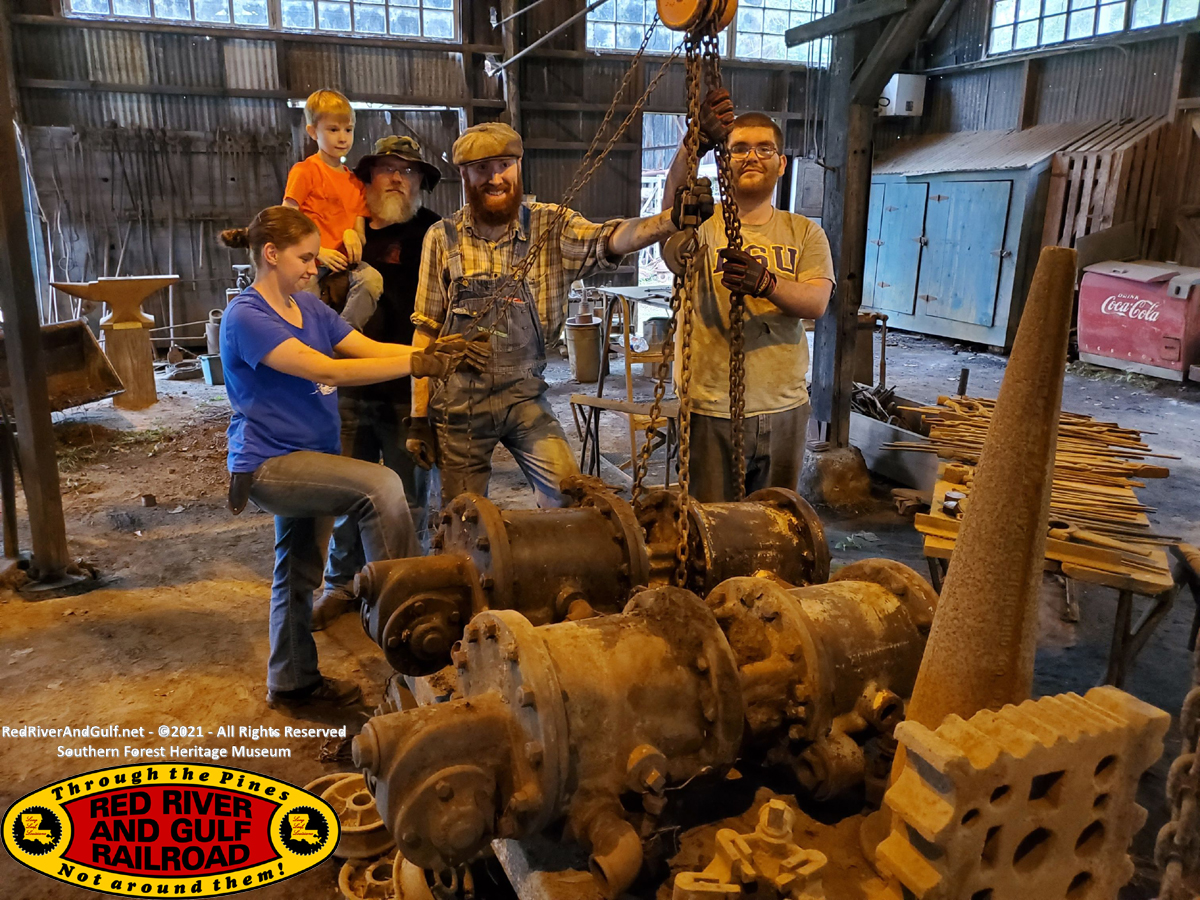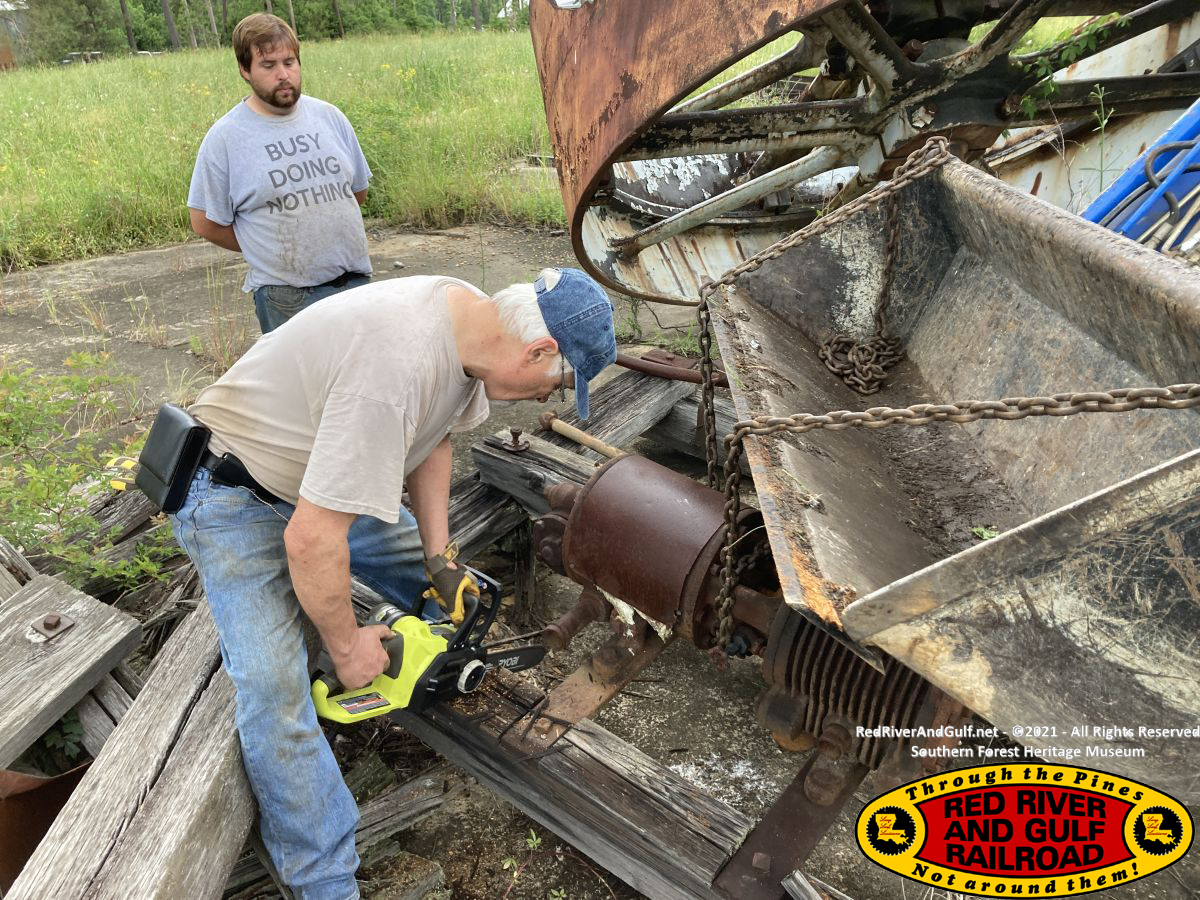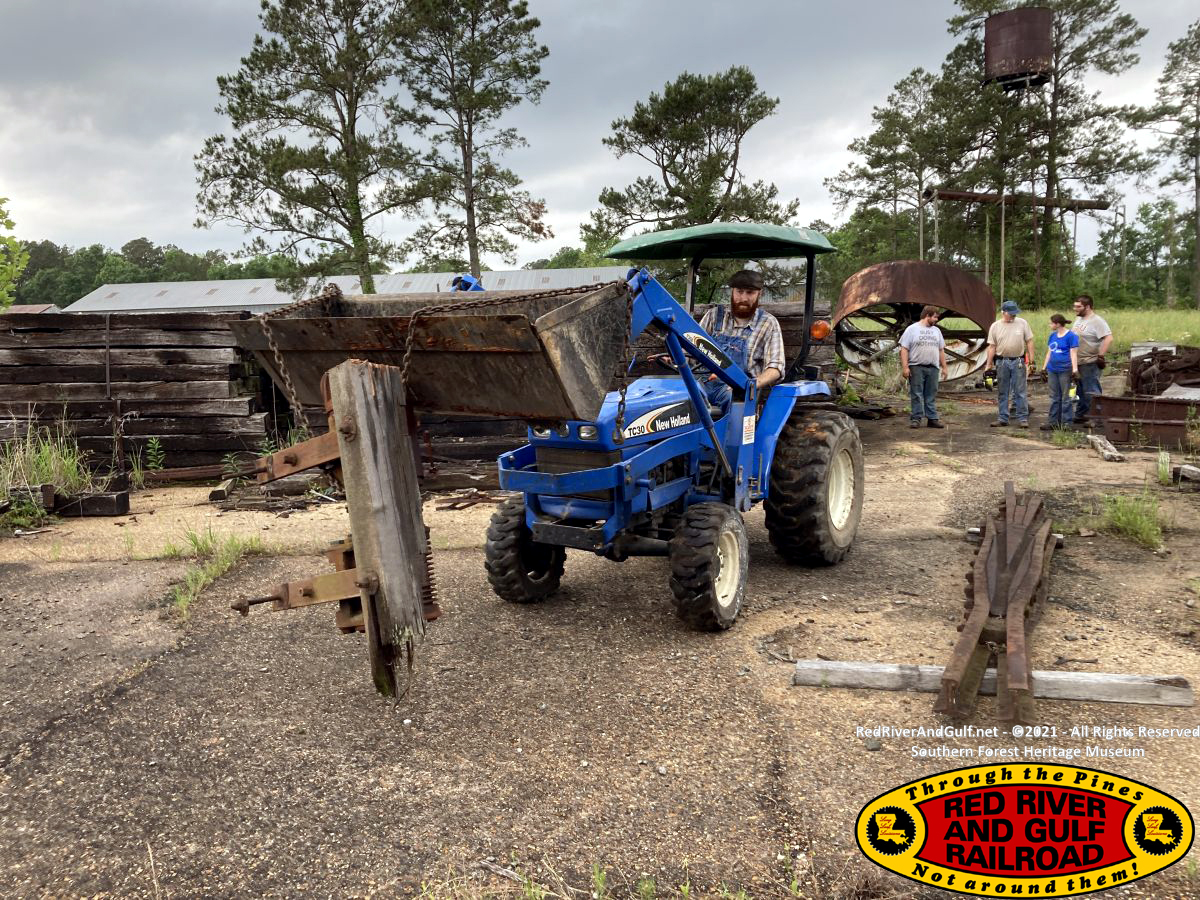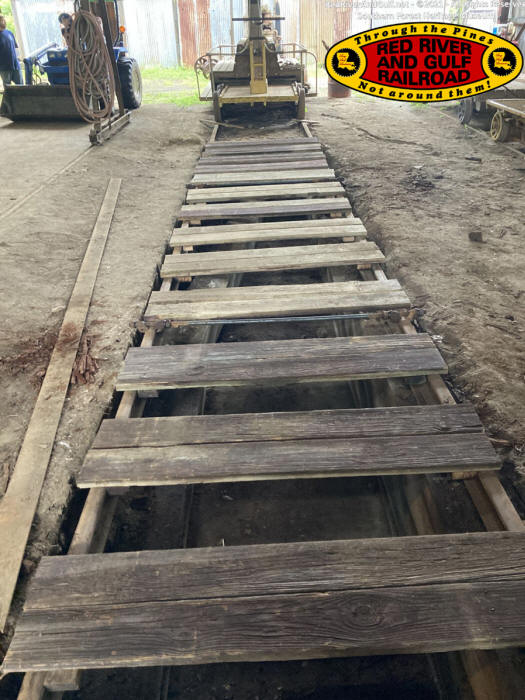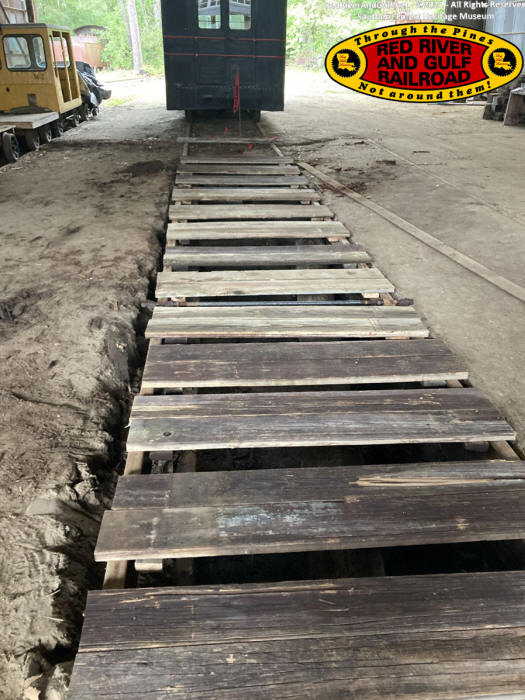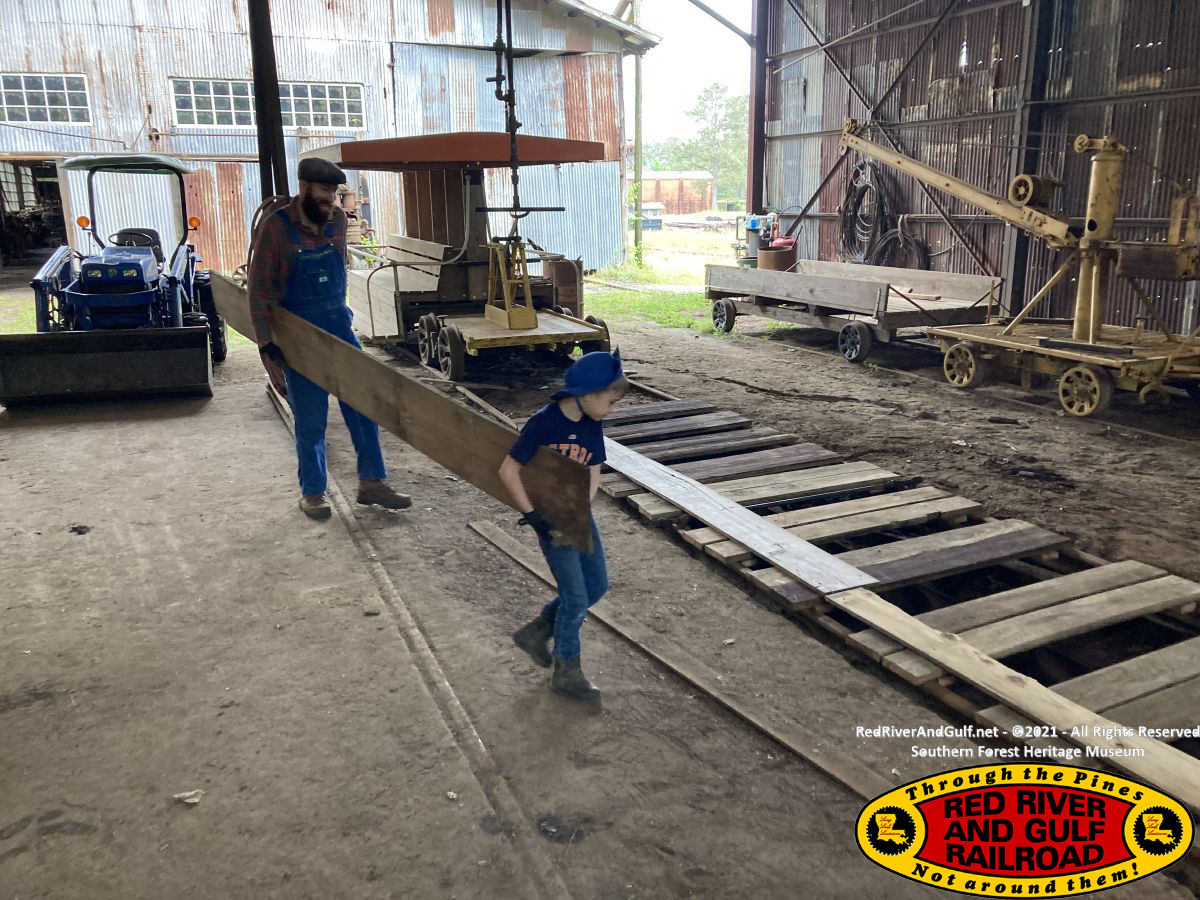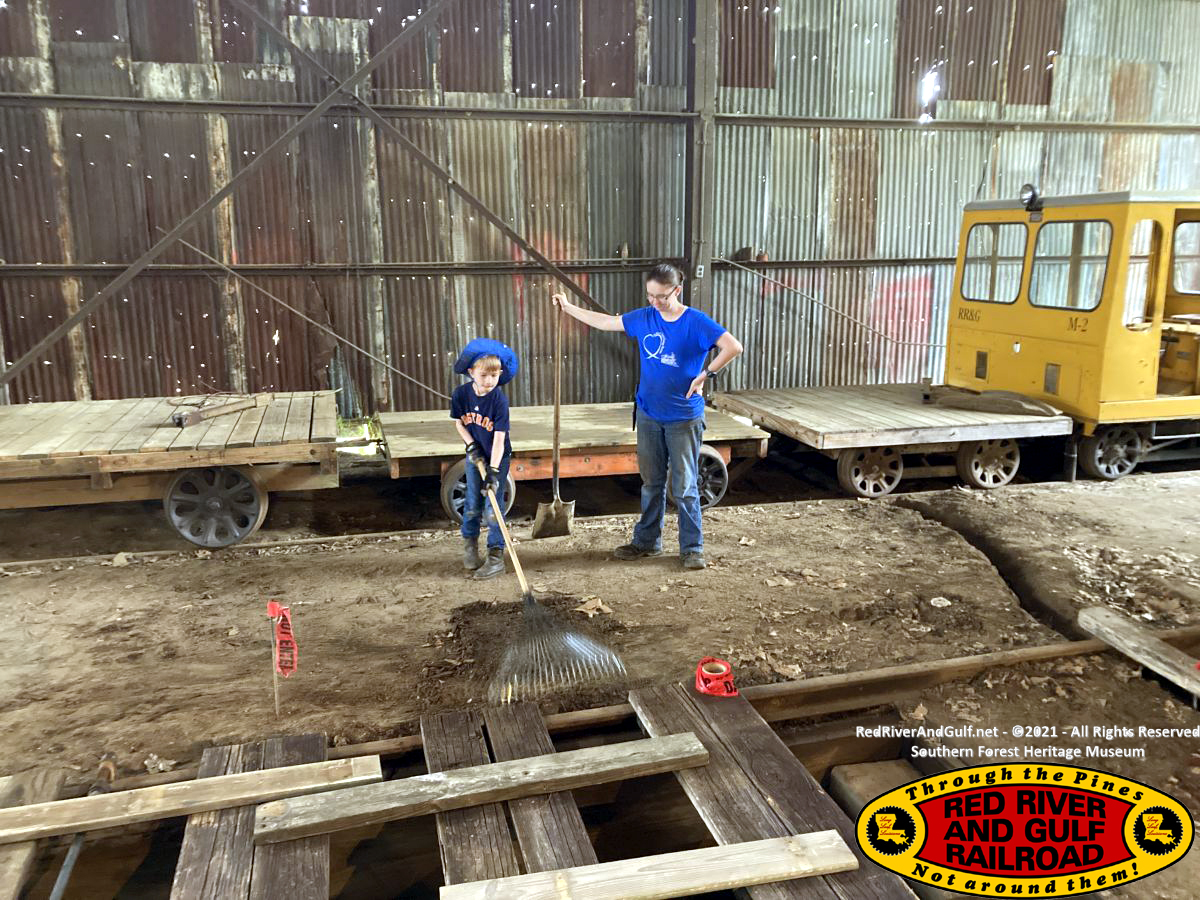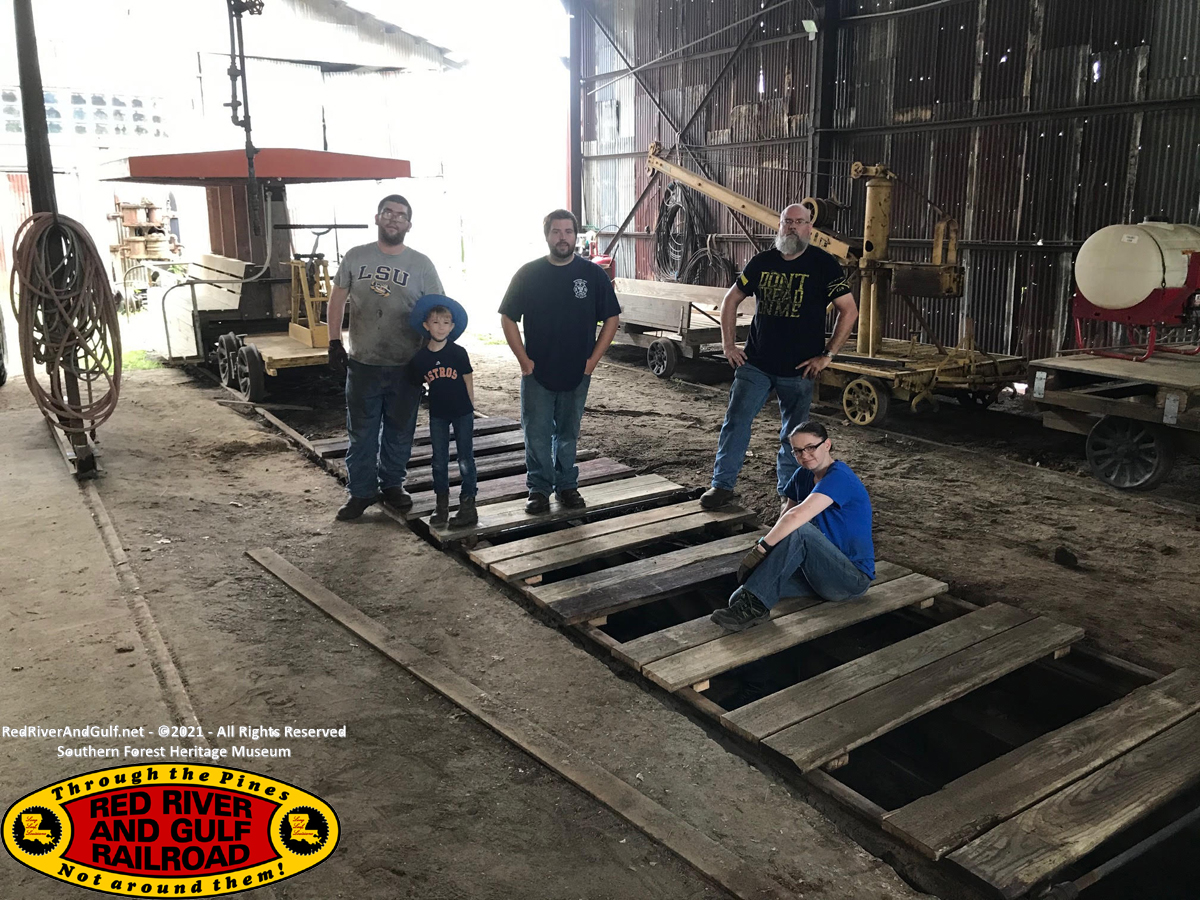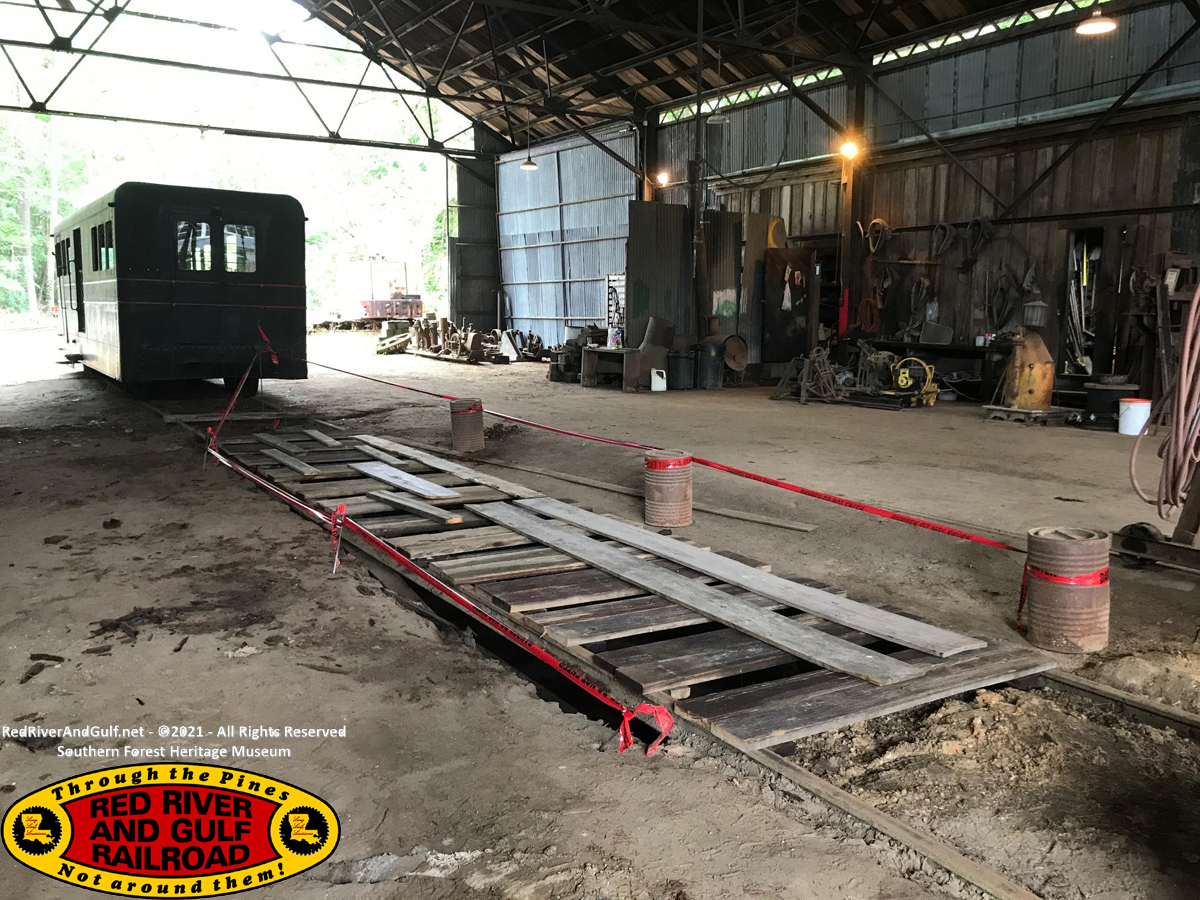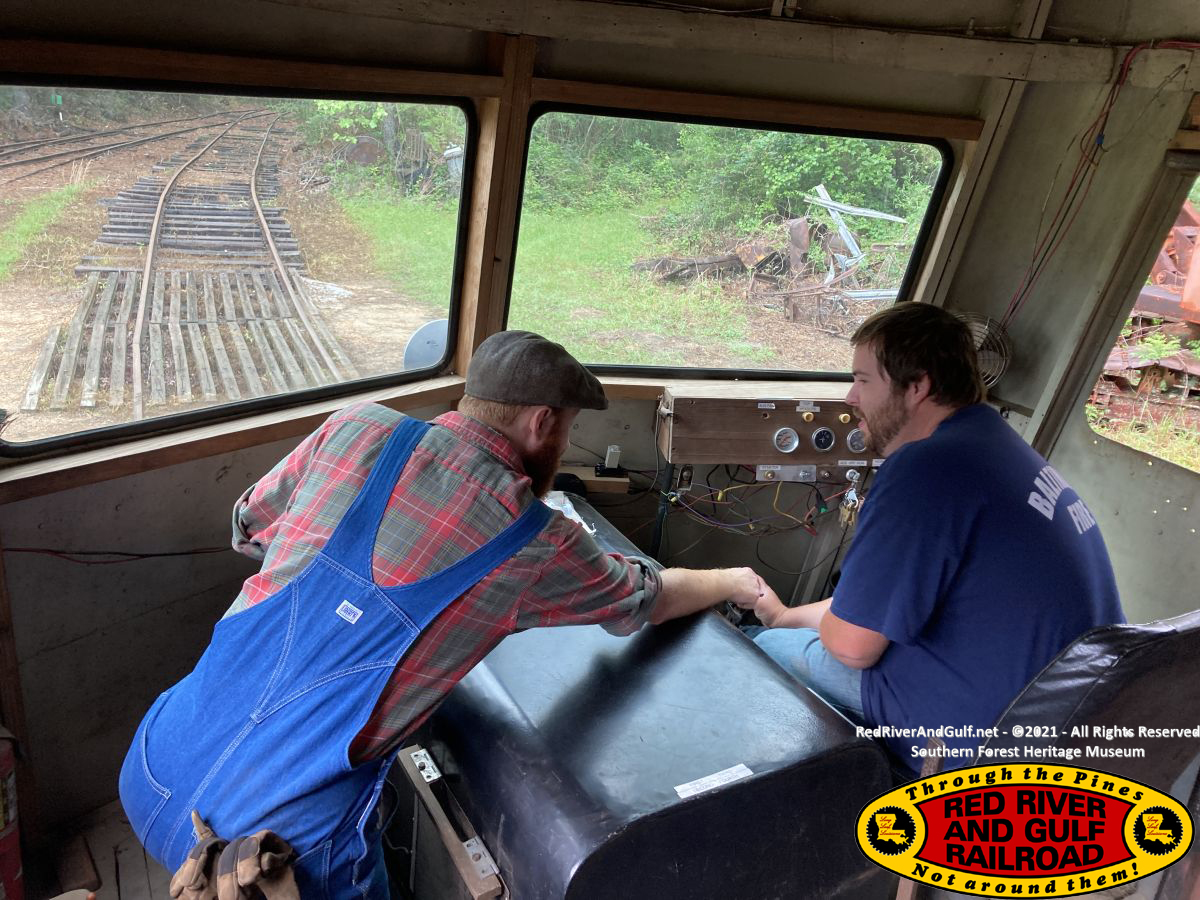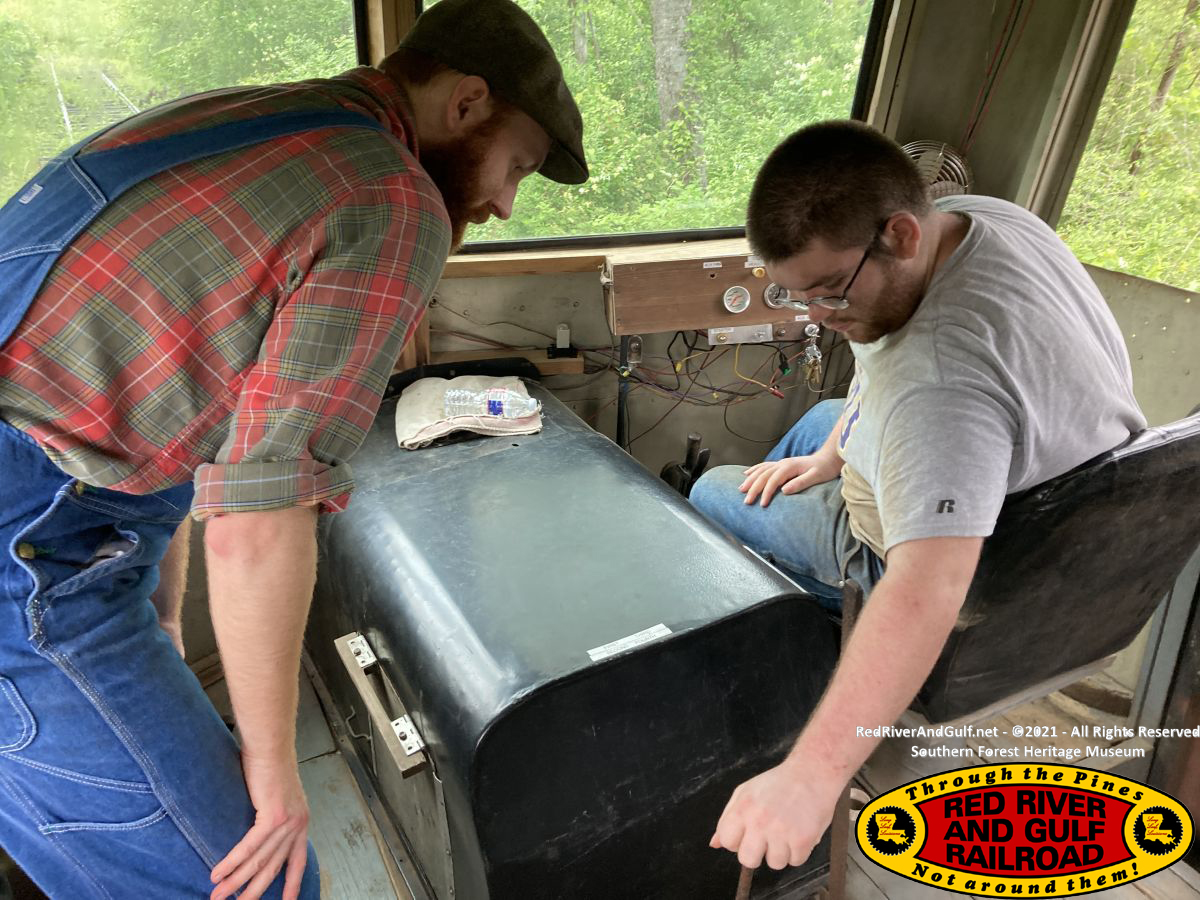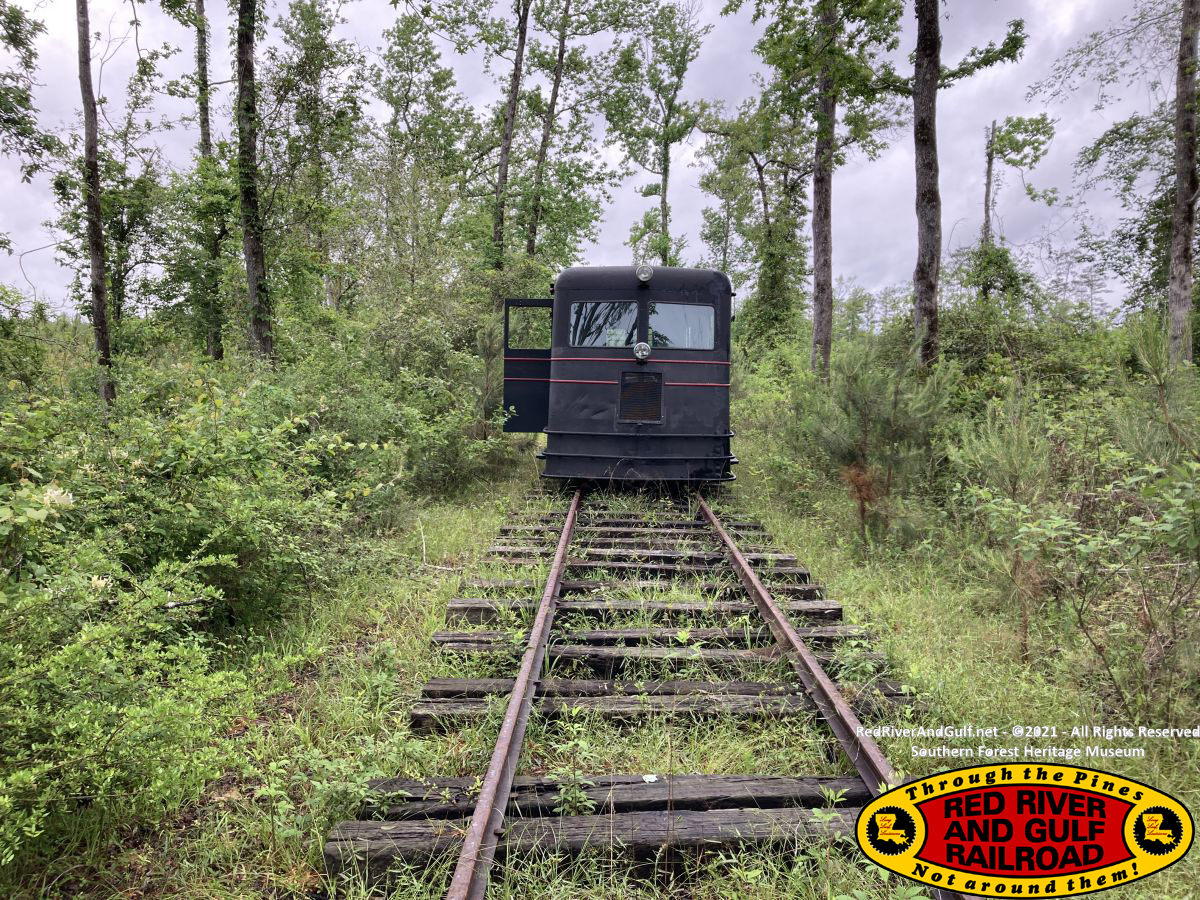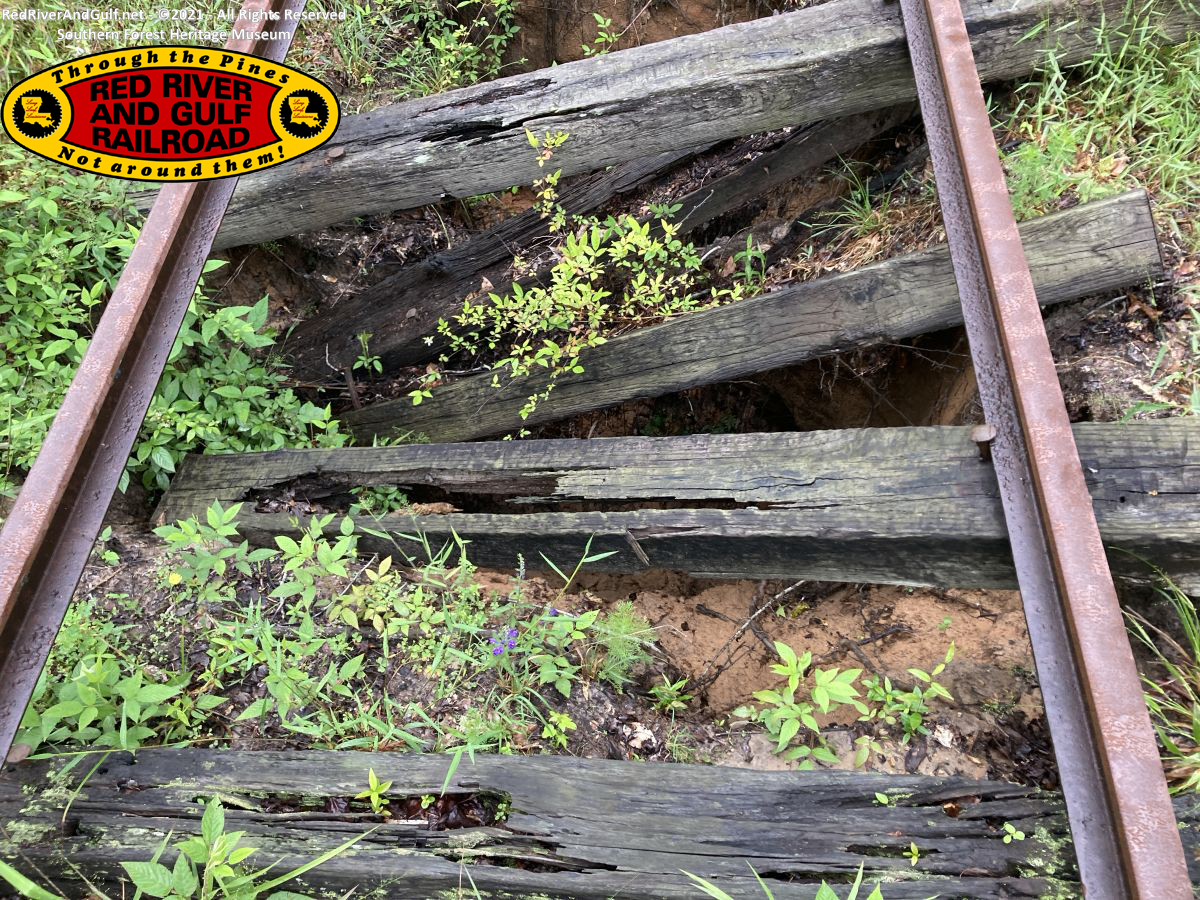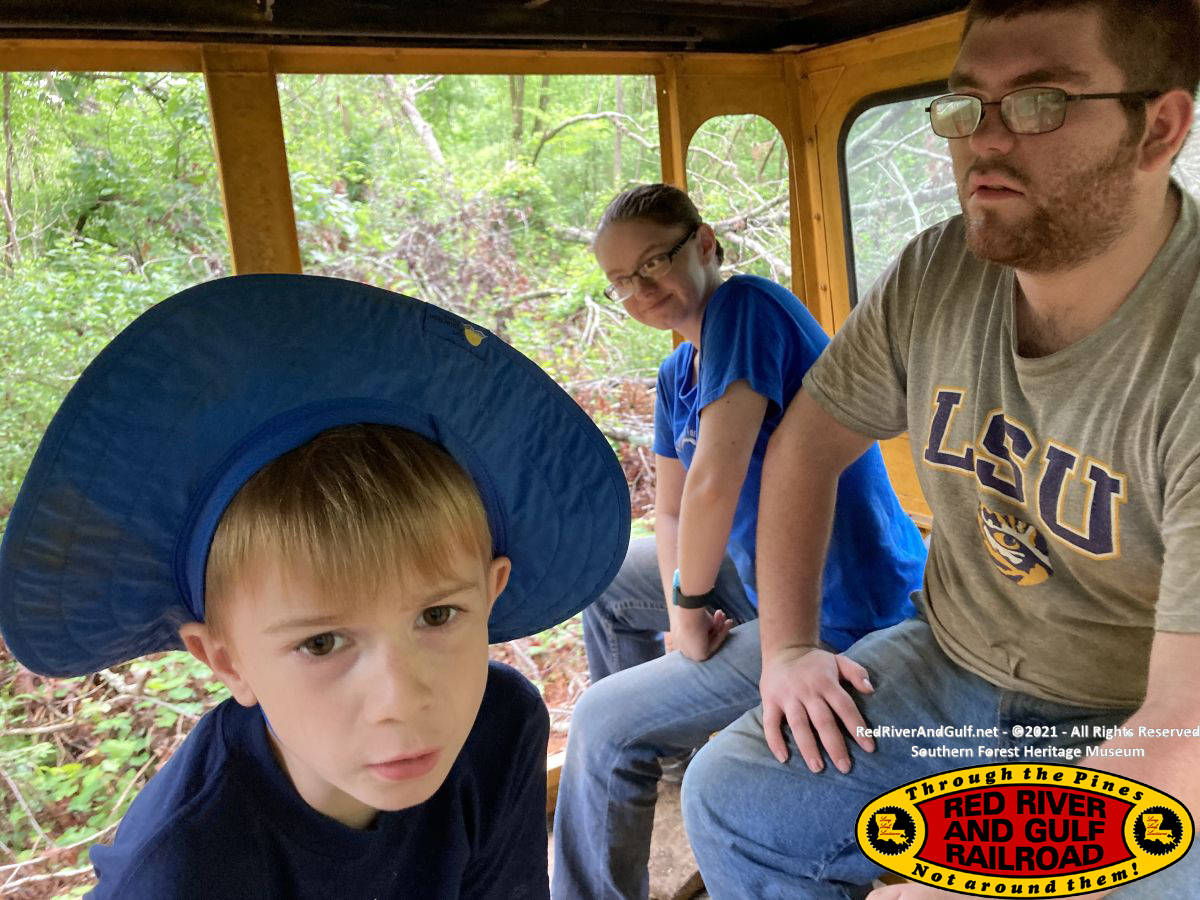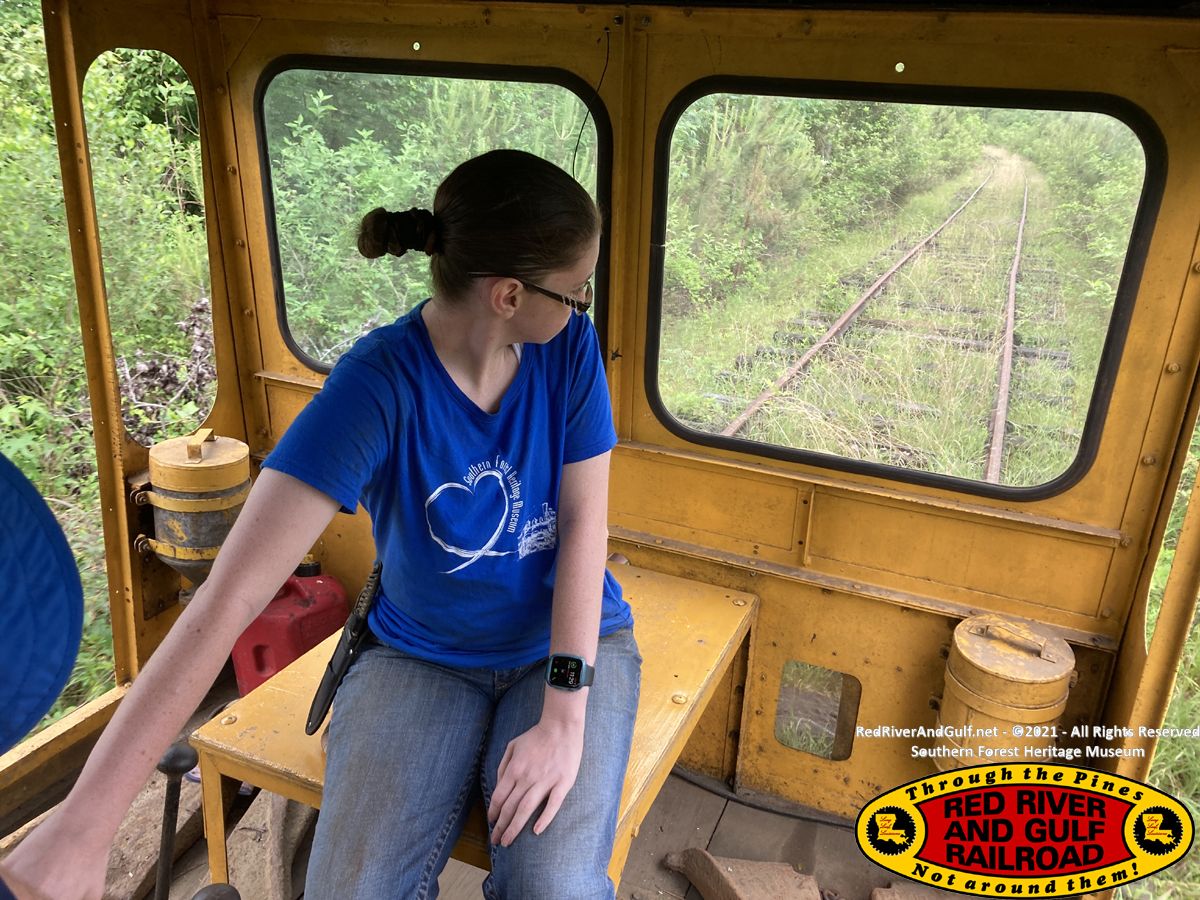|
|
|
Work Session May 1, 2021
To join the fun, contact the railroad at: Work-Session @ RedRiverAndGulf.net (no spaces)
|
|
Team:
- Drop Pit Demolition started
Saturday
Crew #1 of Mike B., Mike M., and
Glen were working in the Machine Shop. MB has several locomotive parts,
including a Heisler drive shaft, needing repair. Glen deserves credit
and a tip of the hat for his work repairing and lubricating the shaper
and large lathe in the Machine Shop to full operating condition. With
the full crew on hand, the drive shaft was hauled over the shop and was
hoisted into place on the lathe. Glen, MB, and Mike spent most of the
day fine tuning these parts. It is great to see the machines doing the
work they were intended for! Mike Miller, MB, and Glen have devoted a
great deal of time and attention to the Machine Shop and we thank them
for it.
Sunday
The team split into groups again,
MB headed into the Machine Shop to use a voltage meter to check some of
the light fixtures where the bulbs were out. Jason, Kevin, Angela, and
Andrew formed a fantastic assembly line to quickly finish the drop pit
covers made from recovered lumber. Tucker and Noah used the tractor to
empty the garbage cans in the dumpster and to bring the final timber
pieces pulled out to the burn pile. With the rain holding off, some
training and operating was held on the M4 and the M2. We look forward to
certifying more operators for the RR&G! Toward the end of the session,
MB, Jason, and Tucker repaired a ladder where a rivet broke. Once
repaired, MB and Tucker replaced the burned out light bulbs in the
Machine Shop.
-Tucker Baker
|
|
|
|
We cleaned out the pit prior to demolition. In hindsight, this was a silly waste of time, but it did get us a nice photo of the old pit. The new pit will look quite different, but will likely outlast everyone that is constructing itl
|
|
|
|
Sure looks good! It's almost a shame we had to tear it apart!
|
|
|
|
With the spikes pulled, Angela and Everett adjust the rails prior to installing temporary gauge bars.
|
|
|
|
Tuckers moves sheet metal away from the pit and into the storage area.
|
|
|
|
Everett, Angela, & Clint.
|
|
|
|
Andrew & Noah dug a trench to divert water away from the pit. Water draining into the pit is what rotted the lining timbers and got us into this mess.
|
|
|
|
Tucker moves the last of the sheet metal. Everett & Jeanie supervise.
|
|
|
|
Kevin sharpens spikes
|
|
Teamwork was needed to move a Heisler driveshaft to the Machine Shop
|
|
|
|
Continuing to demo and clean out the pit
|
|
|
|
|
|
|
|
|
|
|
|
|
|
|
|
|
|
|
|
|
|
|
|
|
|
Retrieving boards from the scrap lumber pile to build a cover for the pit.
|
|
|
|
Noah used breaks to collect blackberries for a pie that was made when he got home.
|
|
|
|
Training the next generation
|
|
|
|
Glen, Mike & Mike work in the Machine Shop
|
|
This century old shop is still doing what is was built to do!
|
|
|
|
Cutting up the 12x12 timbers into manageable chunks. The full block weighed an estimate 1000 pounds.
|
|
|
|
Attempting to retrieve the lowest timber. We failed and will need to use a backhoe at the next Work Session to finish the demo.
|
|
|
|
Tucker attempts to break up the last timber by hand. This worked, but required far too much effort and time. The backhoe will make quick work of this mess in a few weeks.
|
|
|
|
We even tried the air hammer, which worked pretty well. But, in the end, the amount effort required exceeded our work force.
|
|
|
|
Pulling an air pump out of the dirt where it has rested for more than half a century.
|
|
|
|
Not an easy task...
|
|
|
|
Victory!
|
|
|
|
Loading the air pump into the bucket for transport to the Machine Shop
|
|
|
|
|
|
|
|
|
|
|
|
|
|
|
|
Unloading one of three air pumps that were retrieved.
|
|
|
|
Success! Angela, Noah, Jason, Tucker & Andrew
|
|
|
|
Everett cuts up the frame for another air pump so that it could moved to the Machine Shop
|
|
|
|
Tucker takes the air pump to its new home
|
|
Sunday morning we completed the temporary cover over the pit. This is purely for safety.
|
|
|
|
Tucker & Noah
|
|
|
|
Noah & Angela do a bit of clean up
|
|
|
|
Victory
|
|
|
|
Done!
|
|
|
|
|
|
|
|
With the work projects complete, we turned our attentions to training some new Motormen. Tucker instructs the rookies on how to operate FC&G M4.
|
|
|
|
Kevin prepares to take her out.
|
|
|
|
Andrew takes a turn
|
|
|
|
Near Hearne's Gulch washout. As soon as we can, we'll construct a new bridge over the gulch.
|
|
|
|
For the time-being, it'll remain a mess.
|
|
|
|
Jason took Angela and Andrew out for some training on RR&G M2. Noah worked the horn.
|
|
|
|
Angela takes a turn as we head for the barn. After tying down the M2, we called it a weekend and made tracks for home.
|
